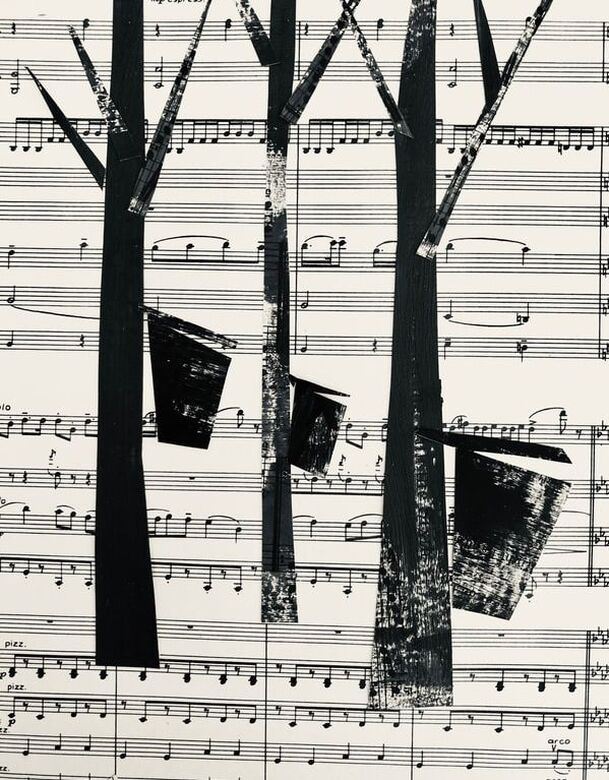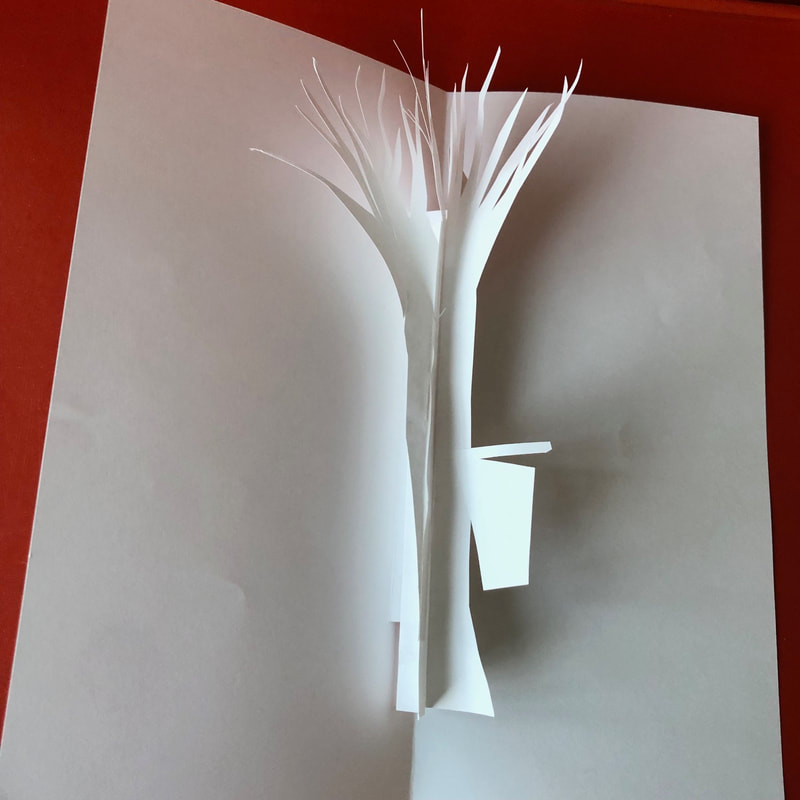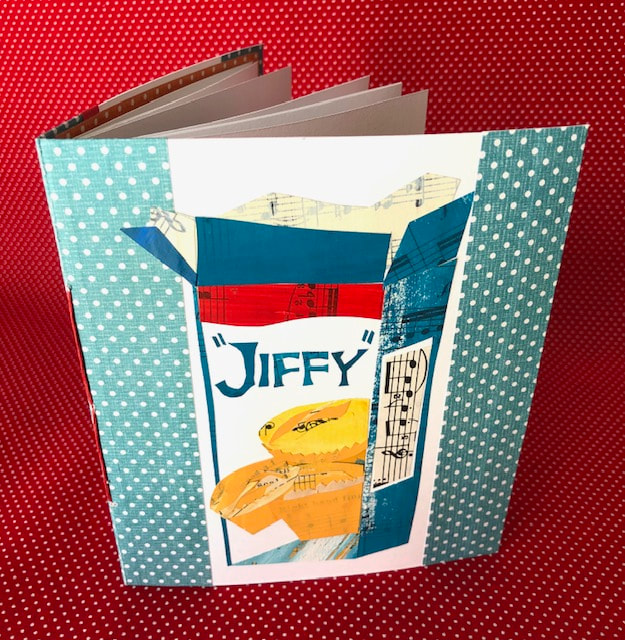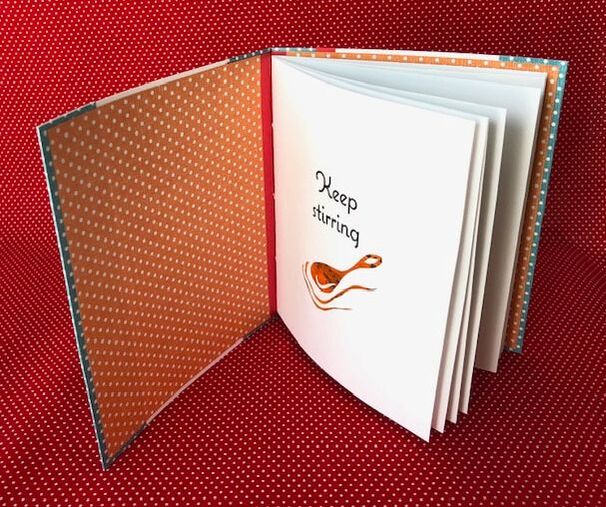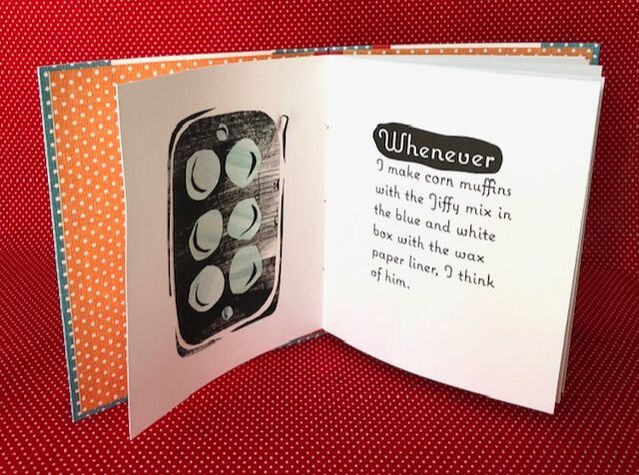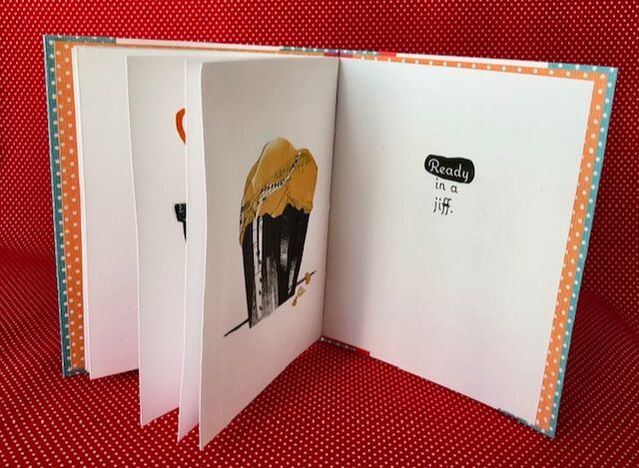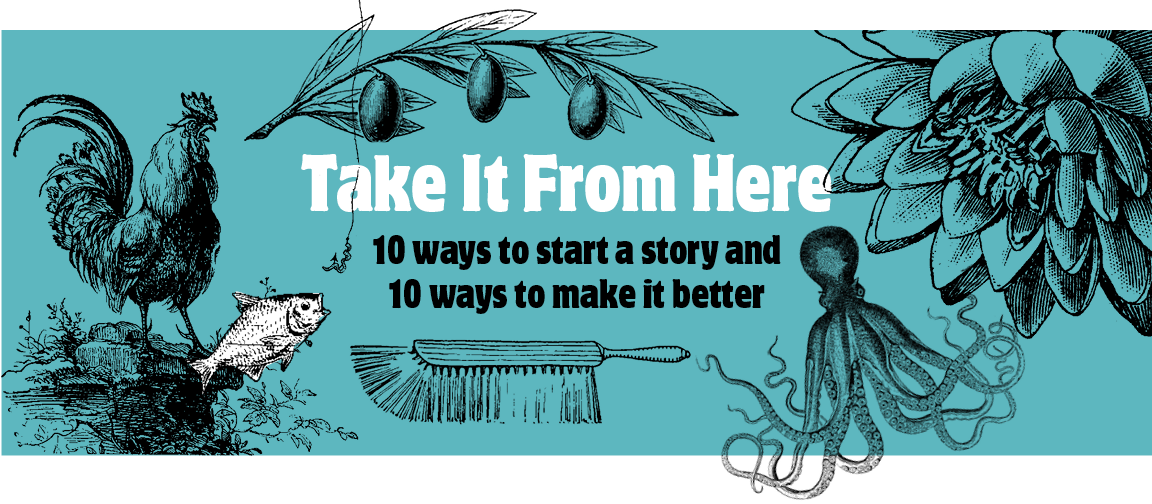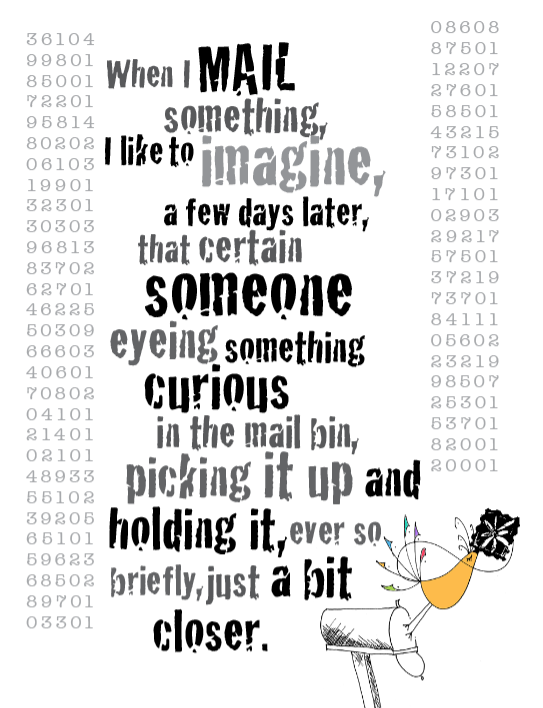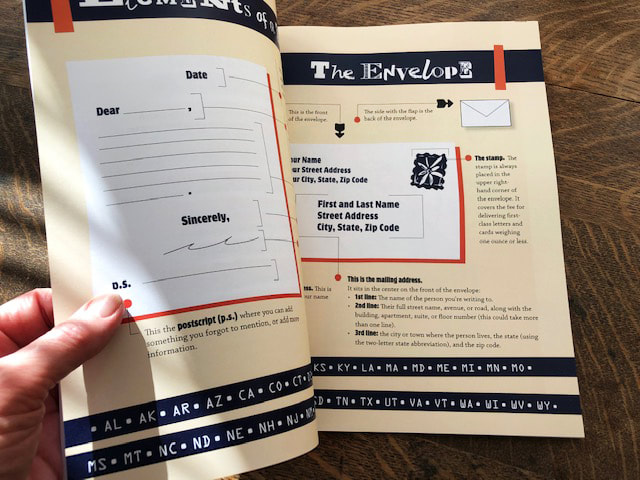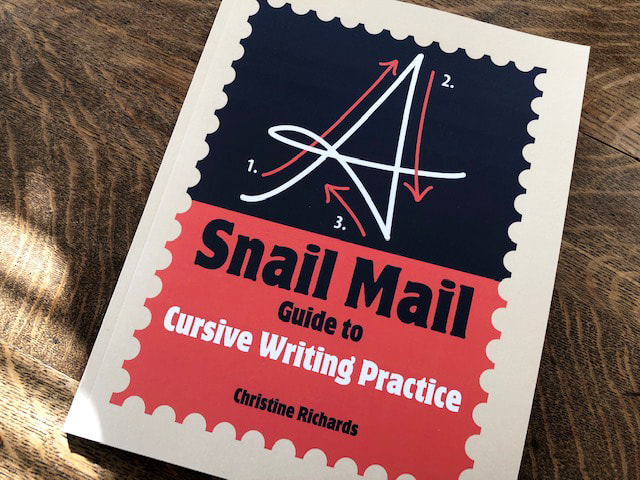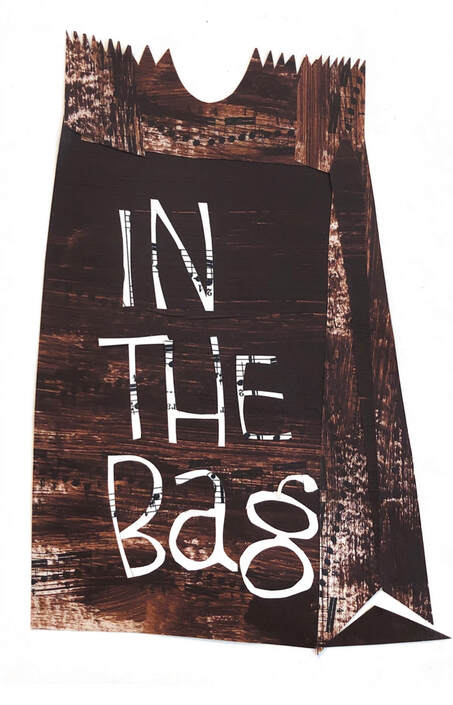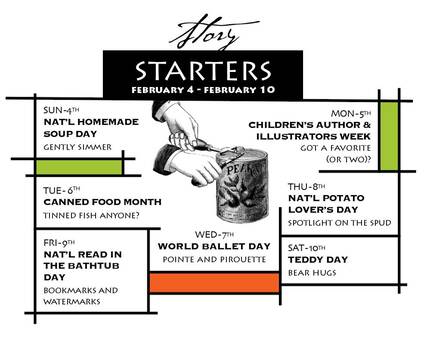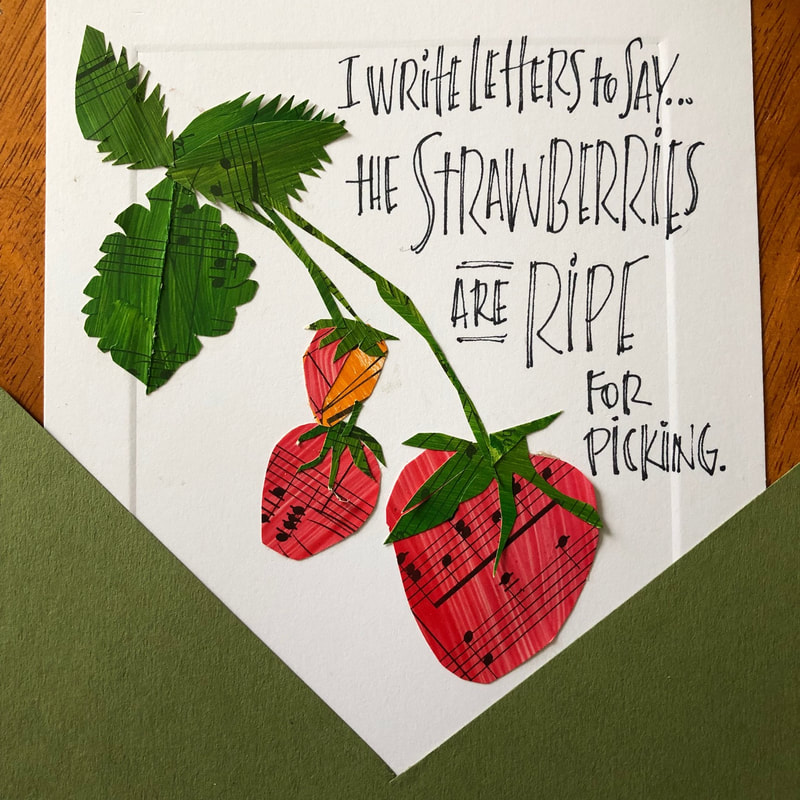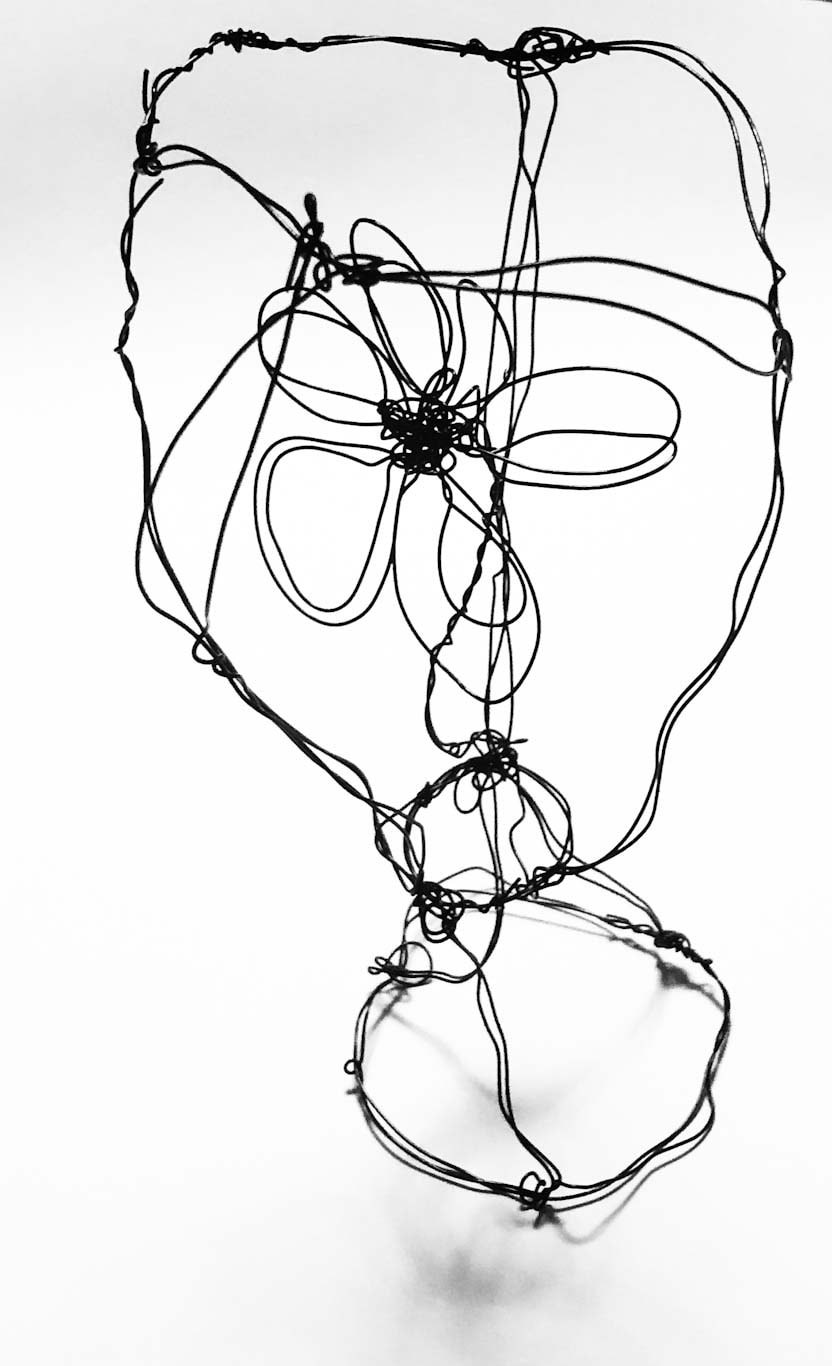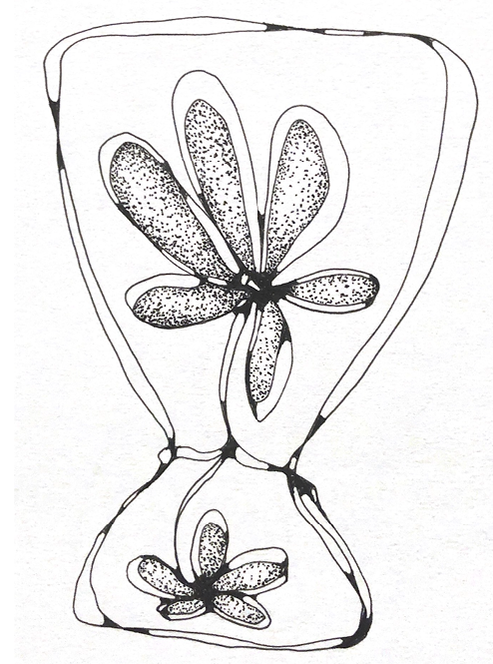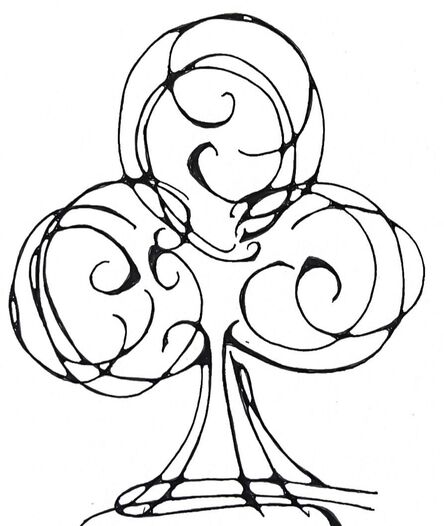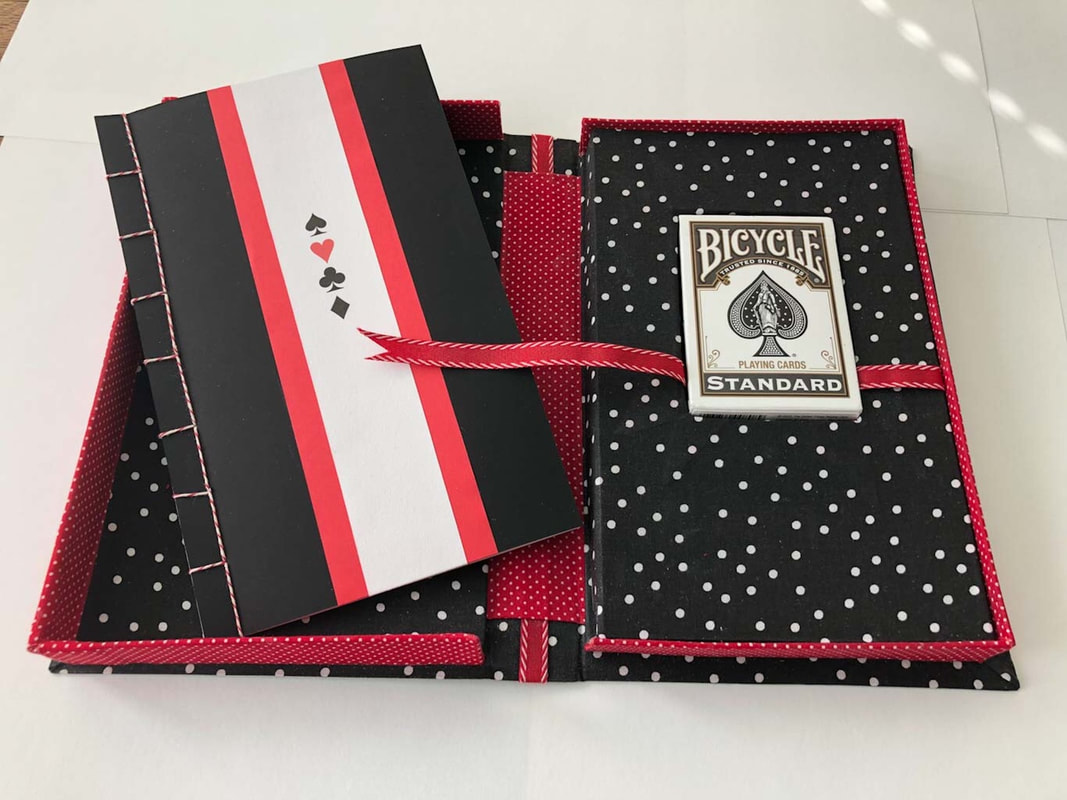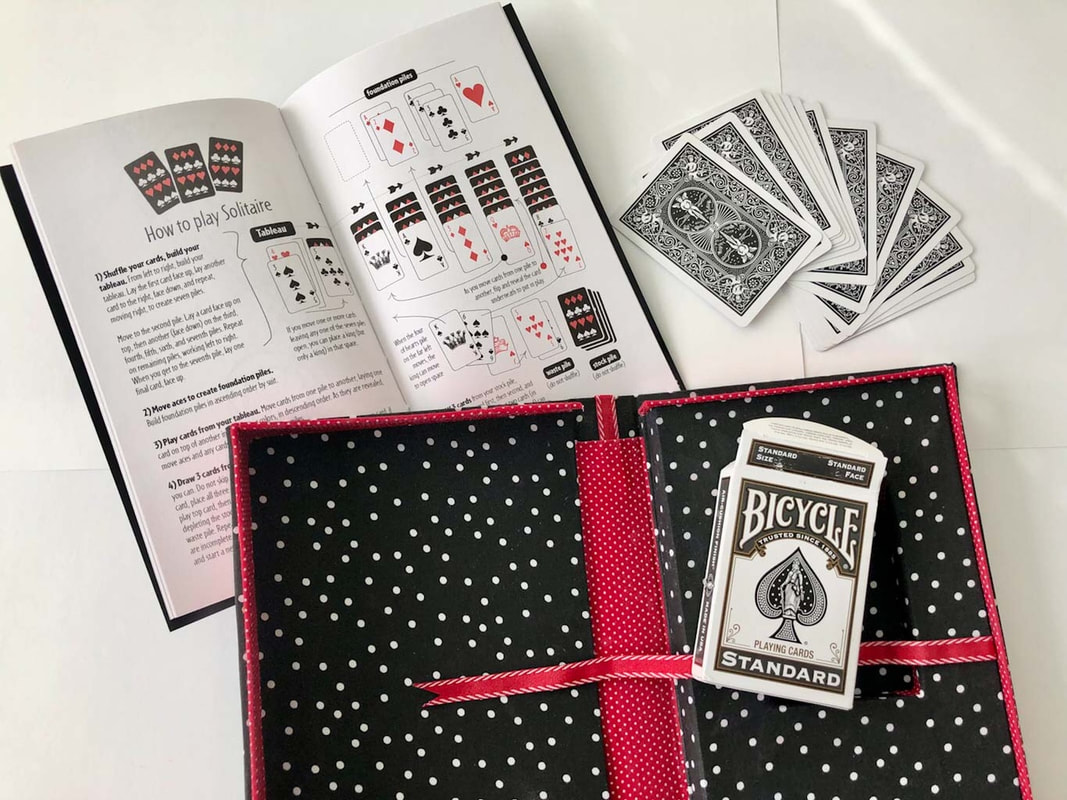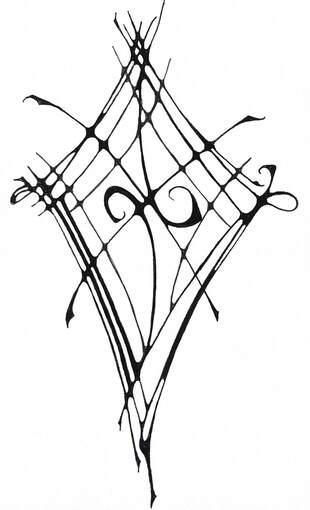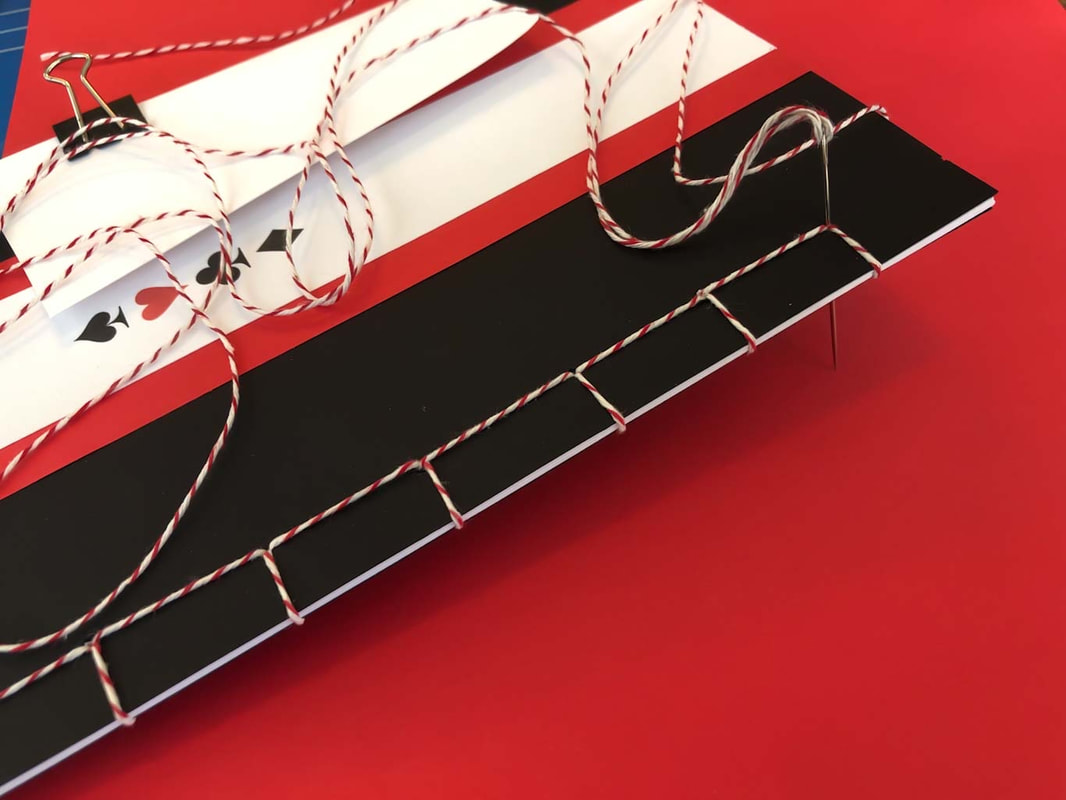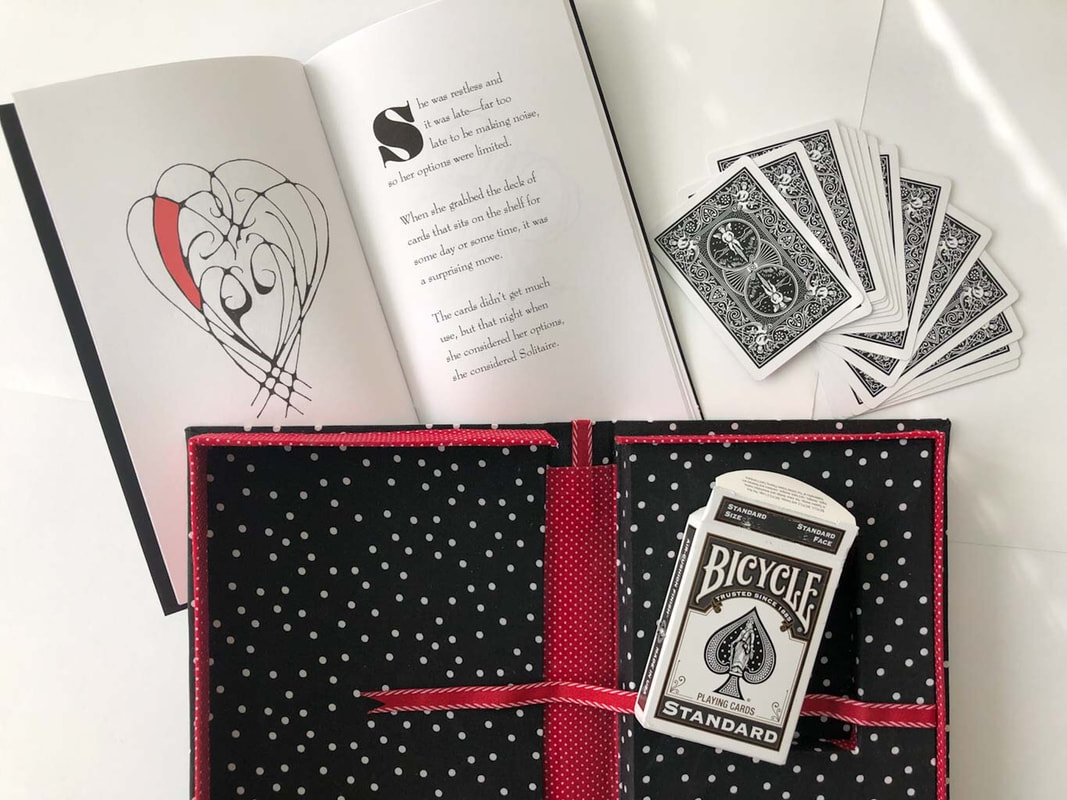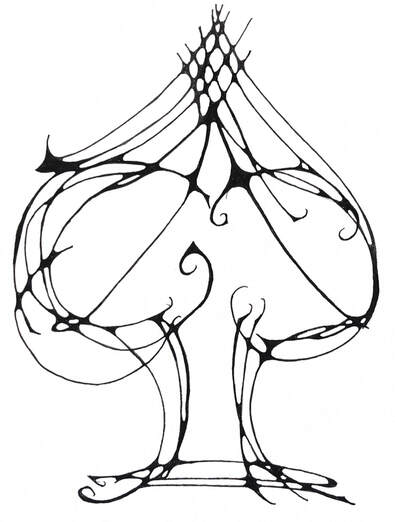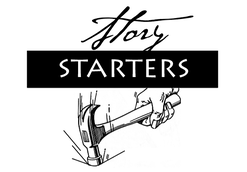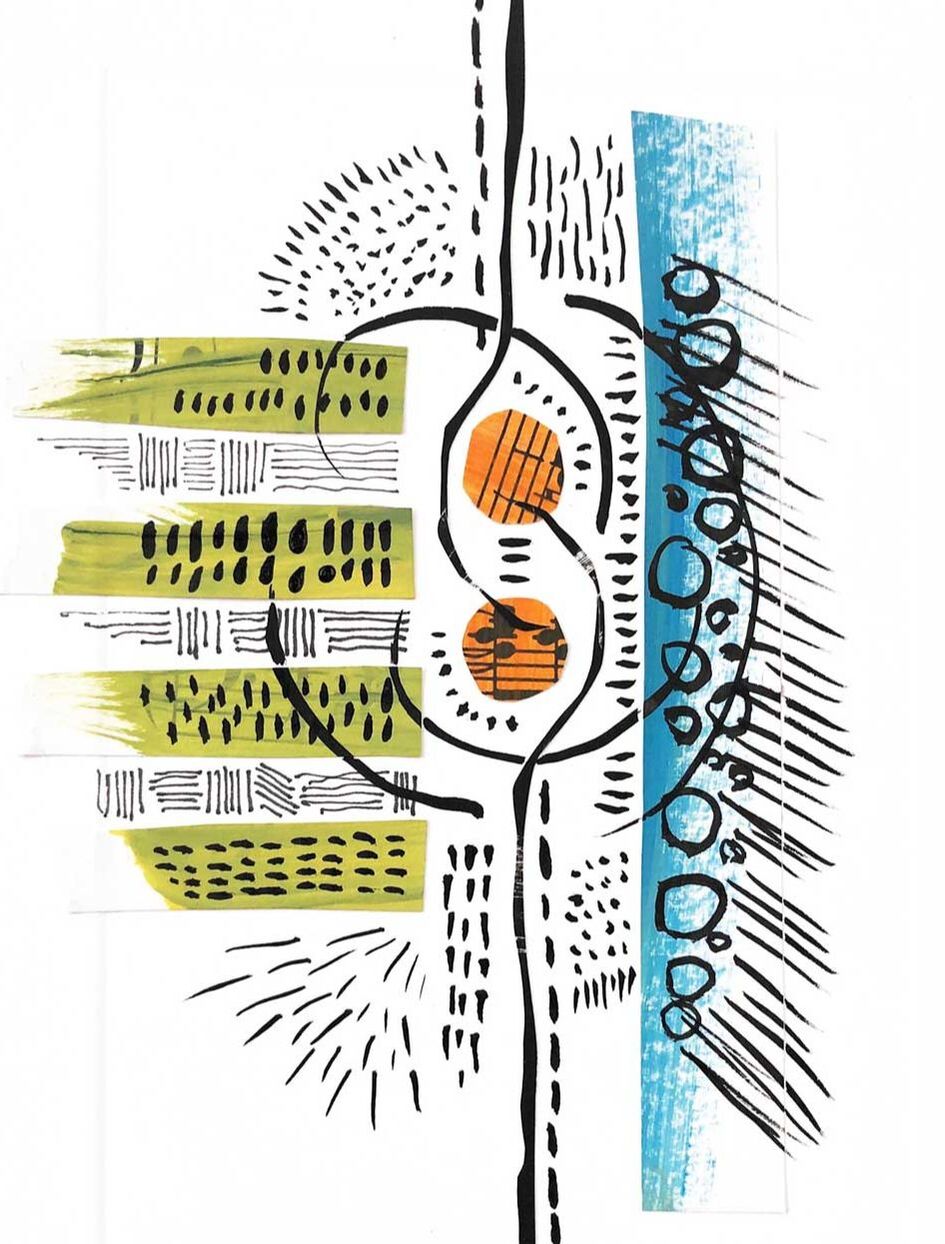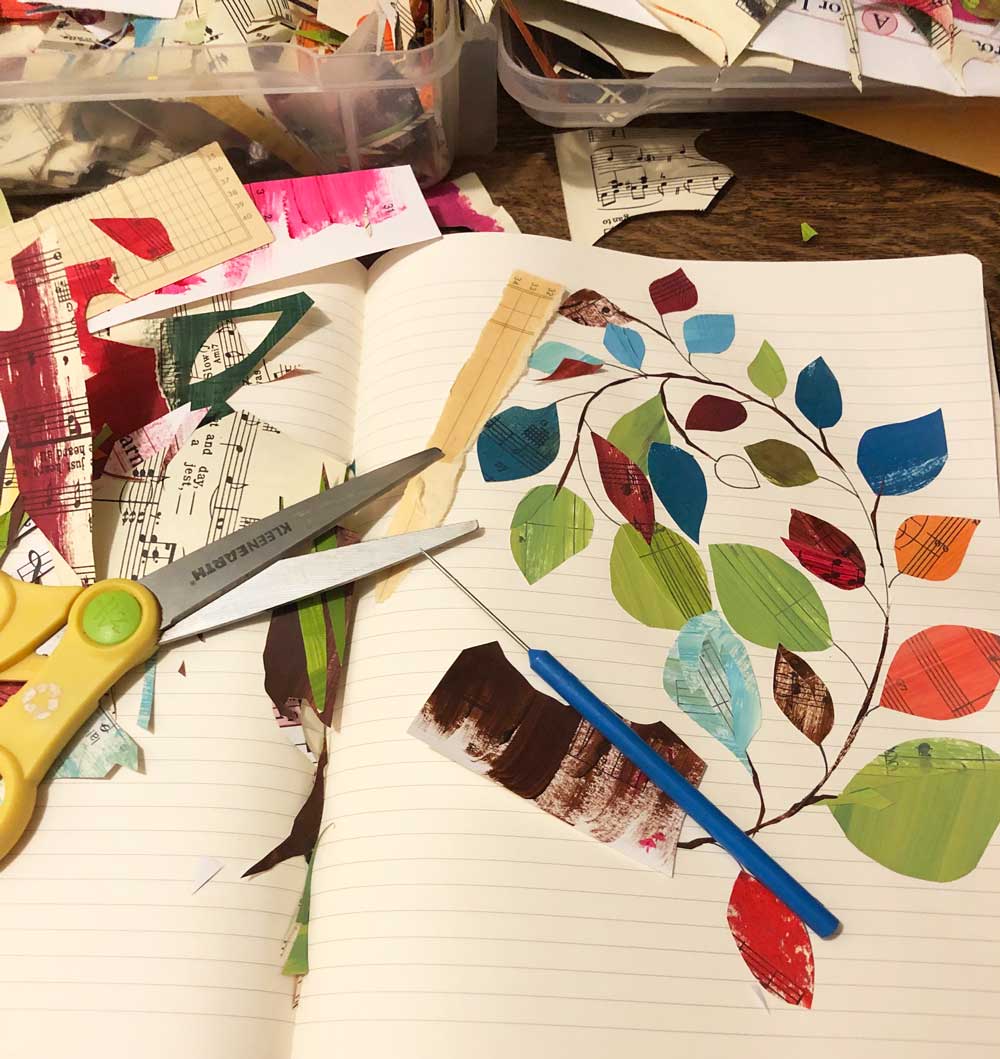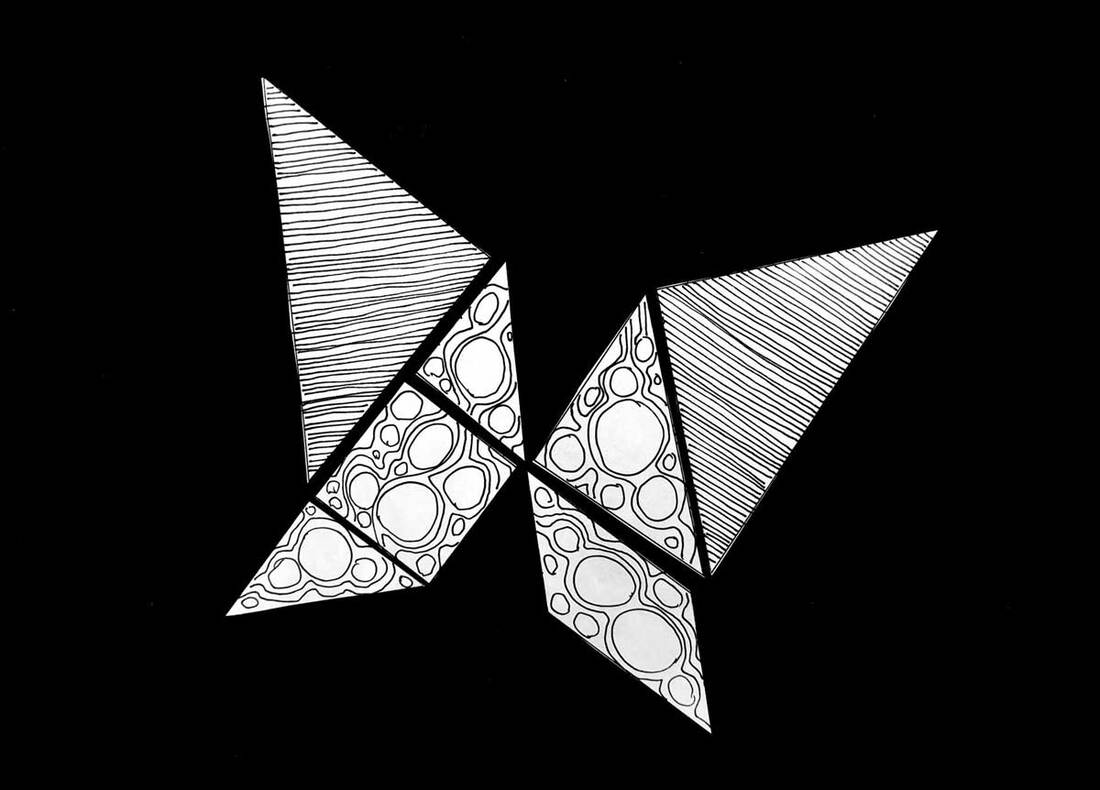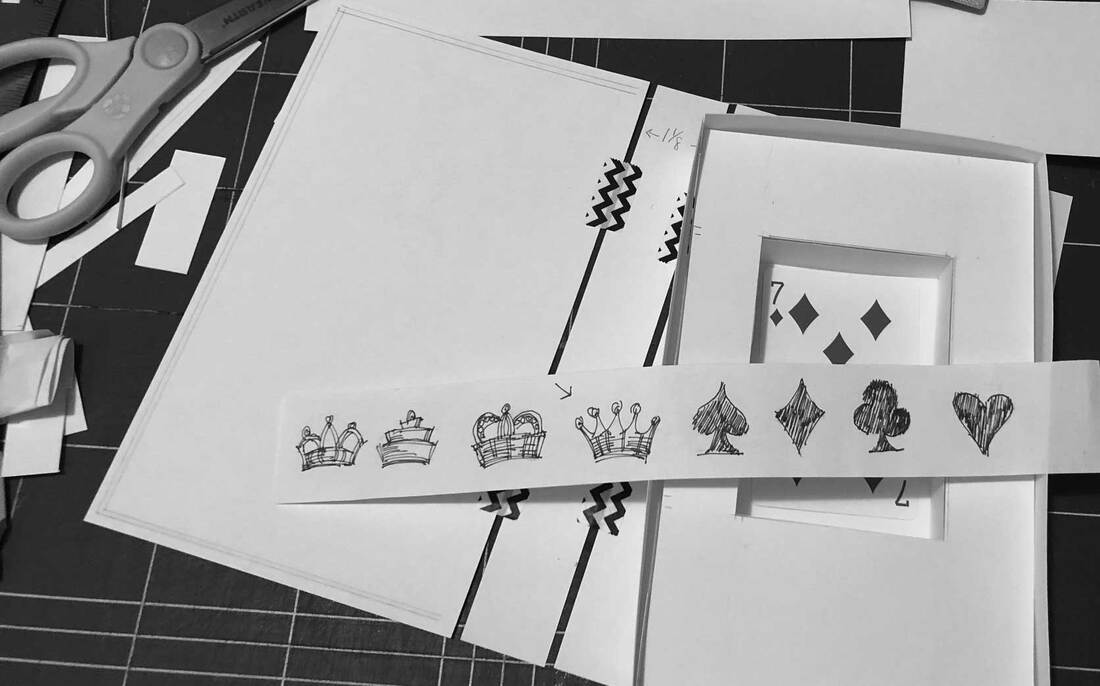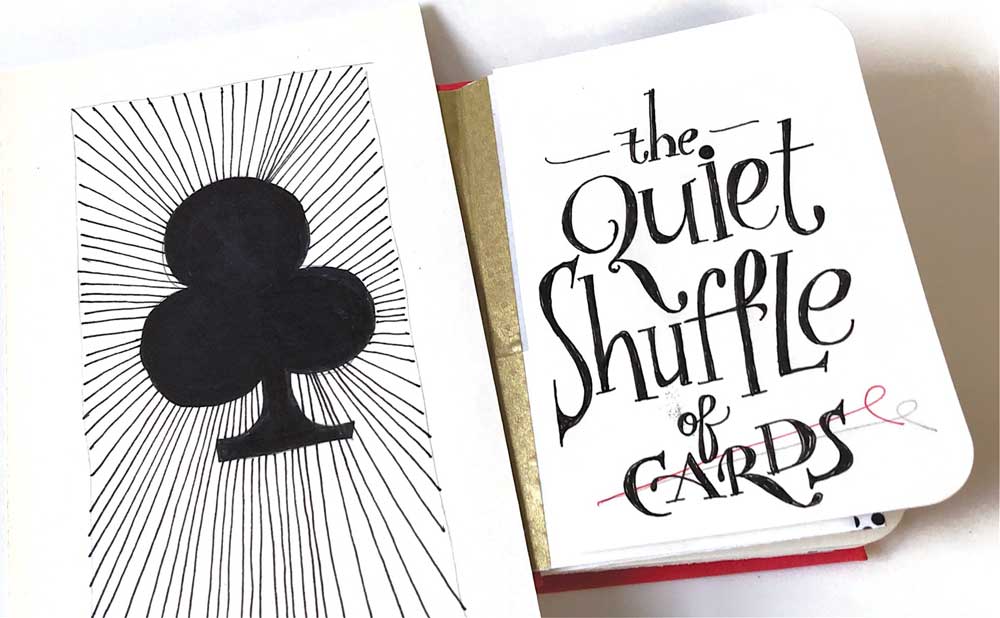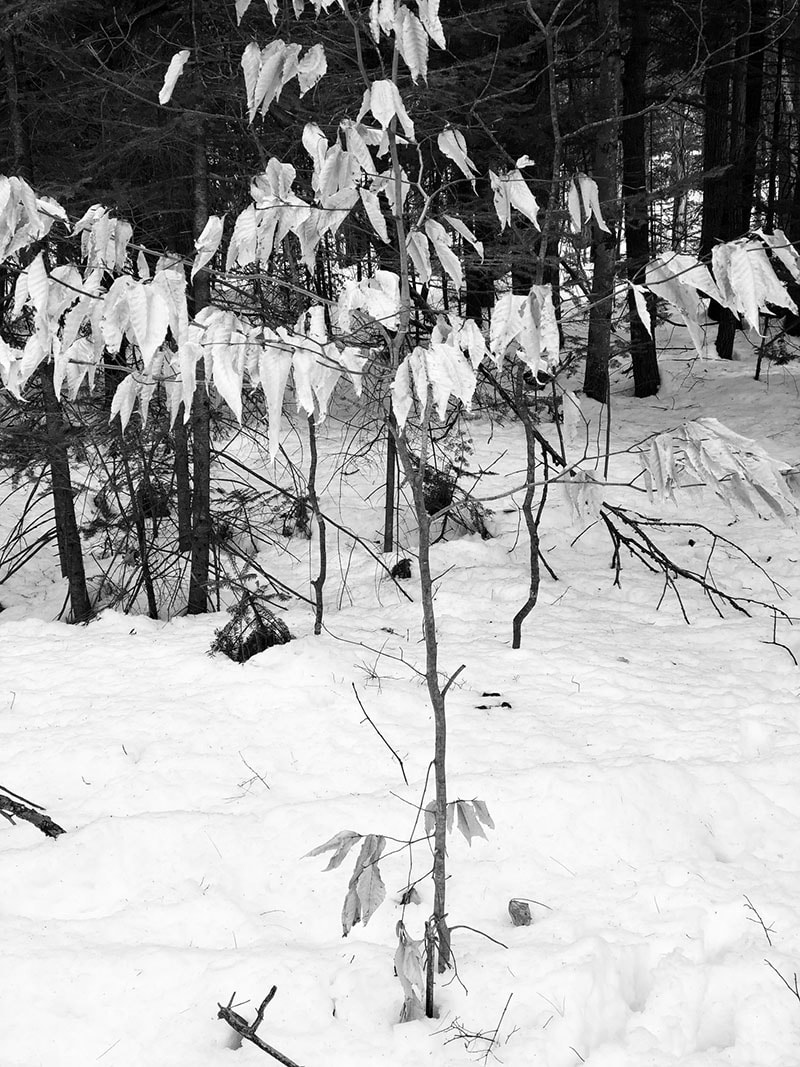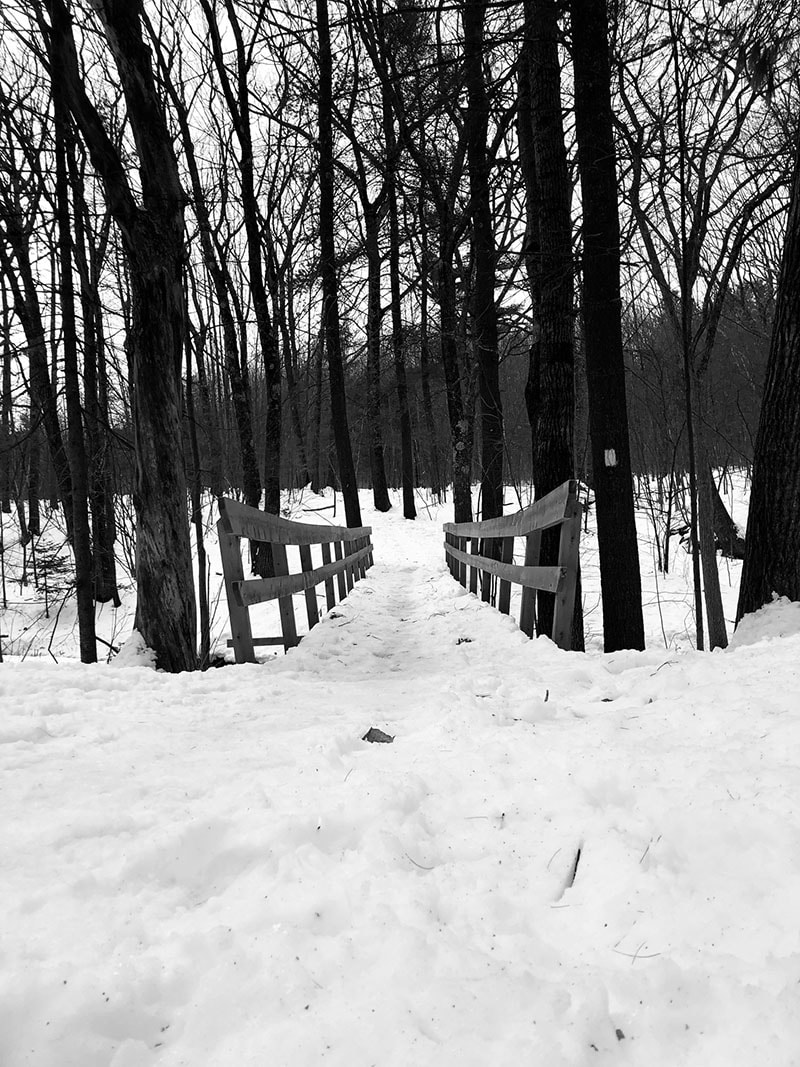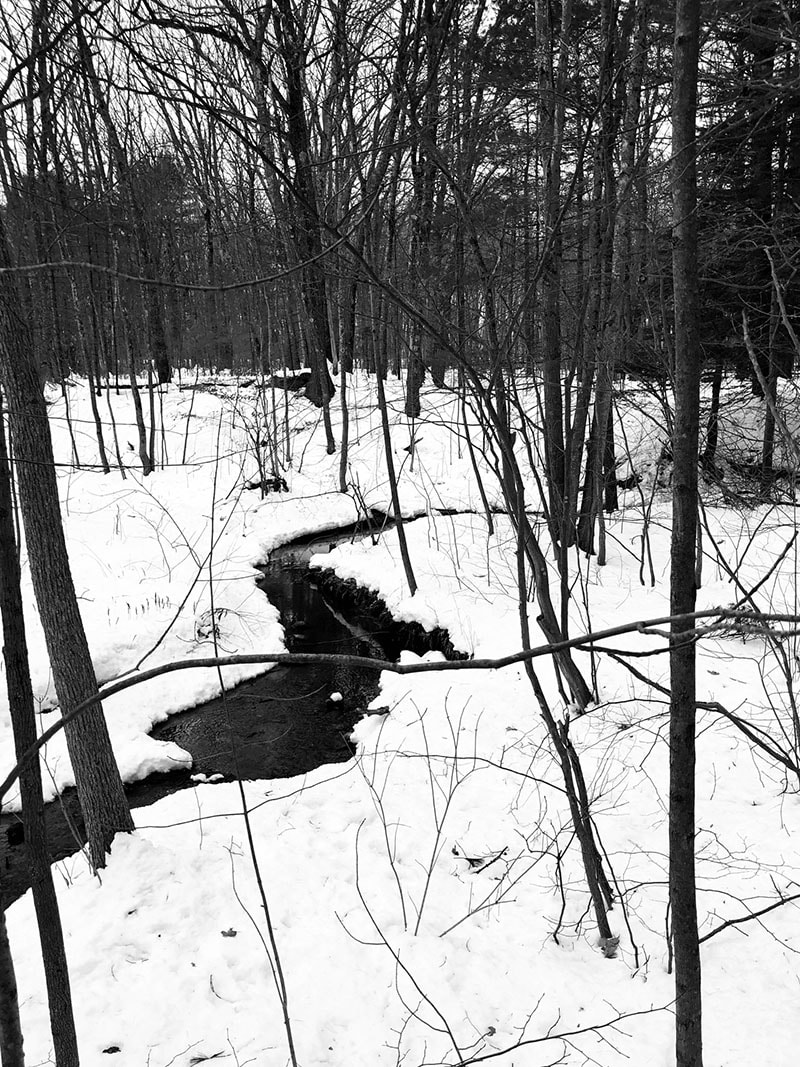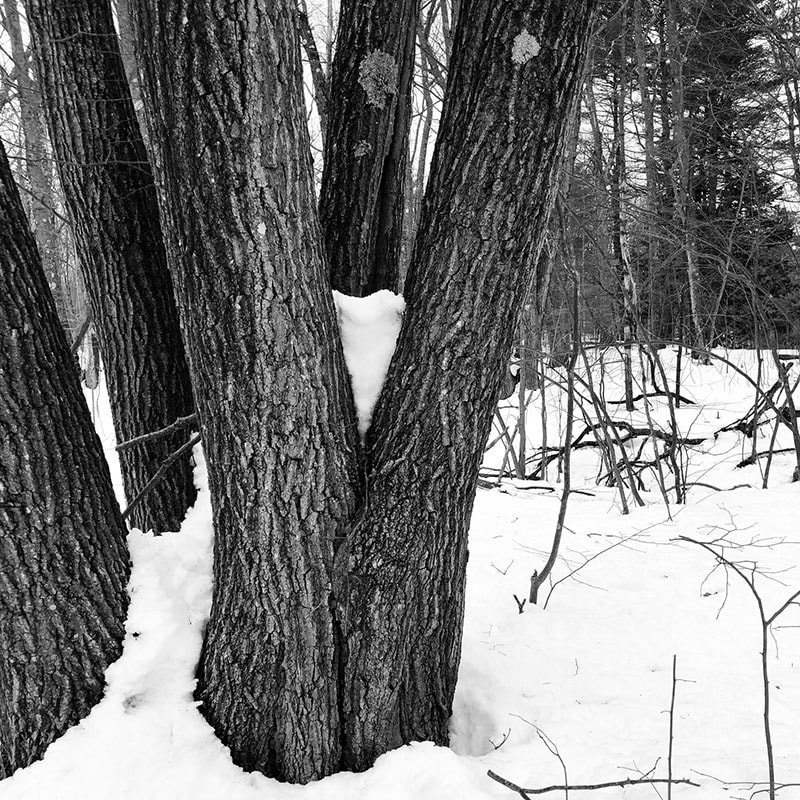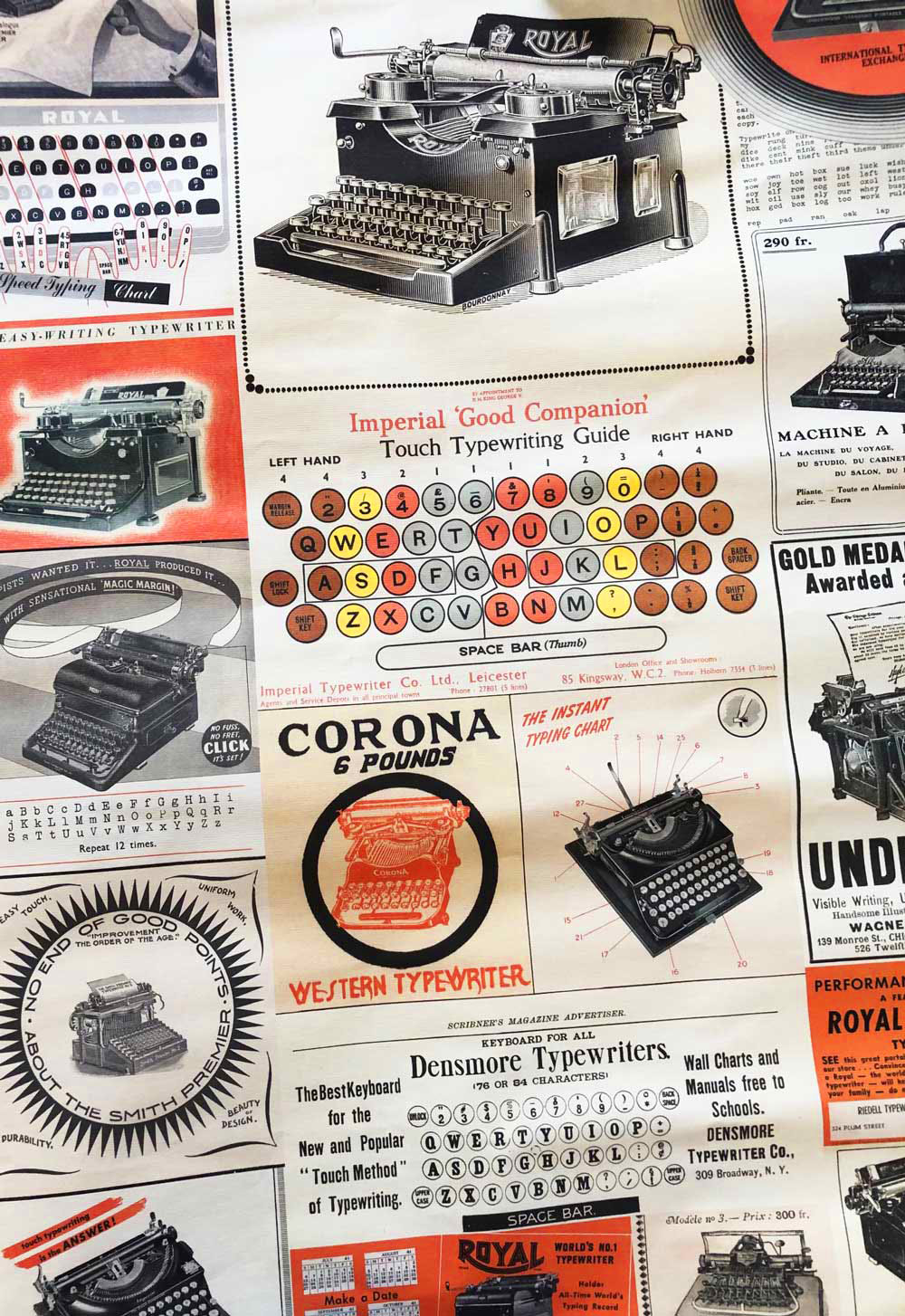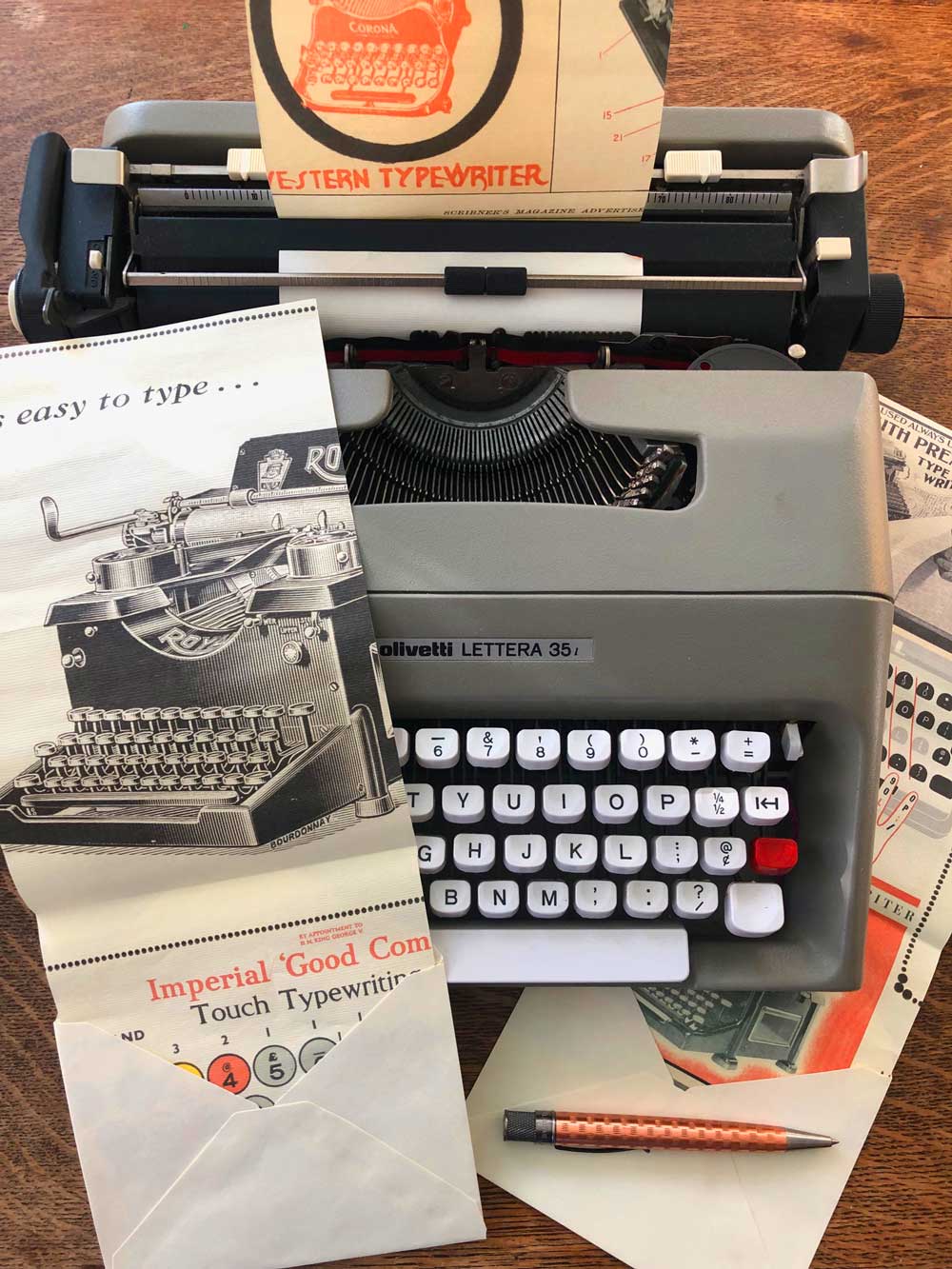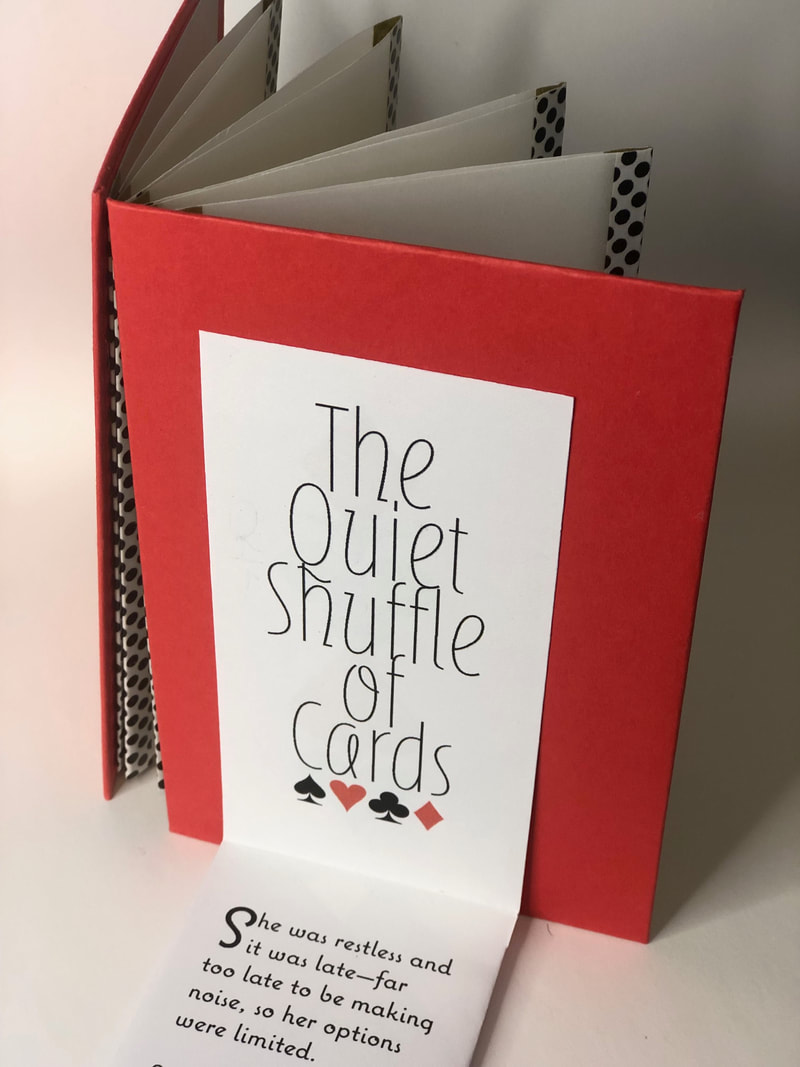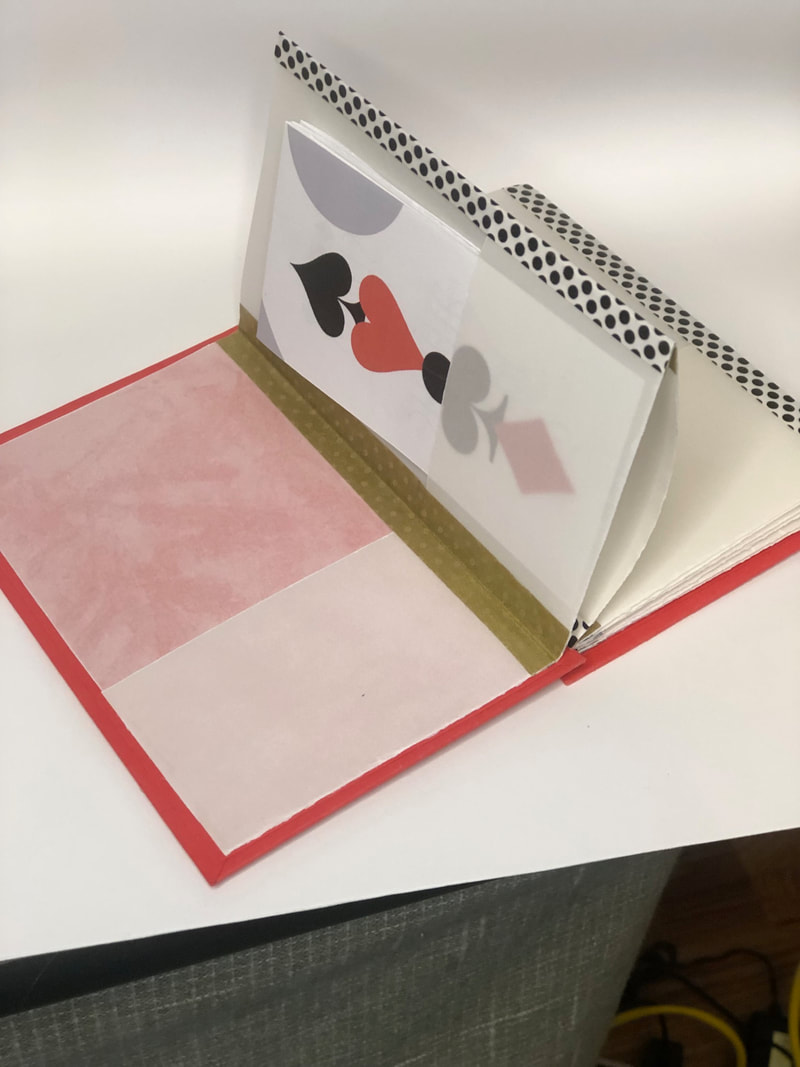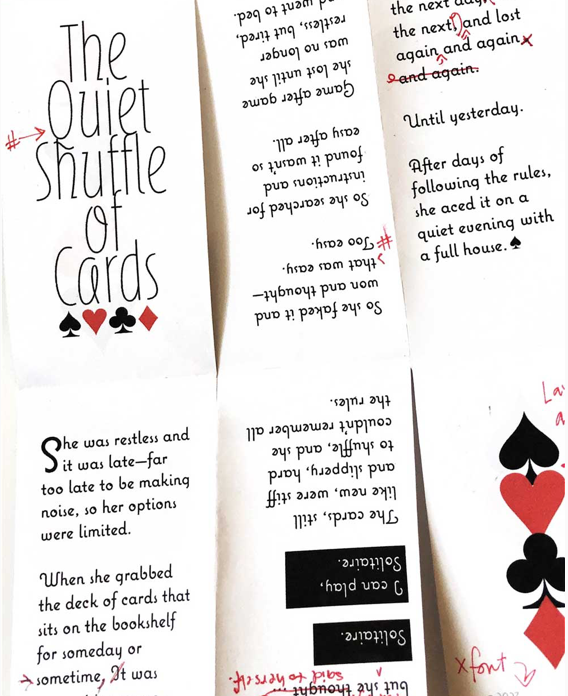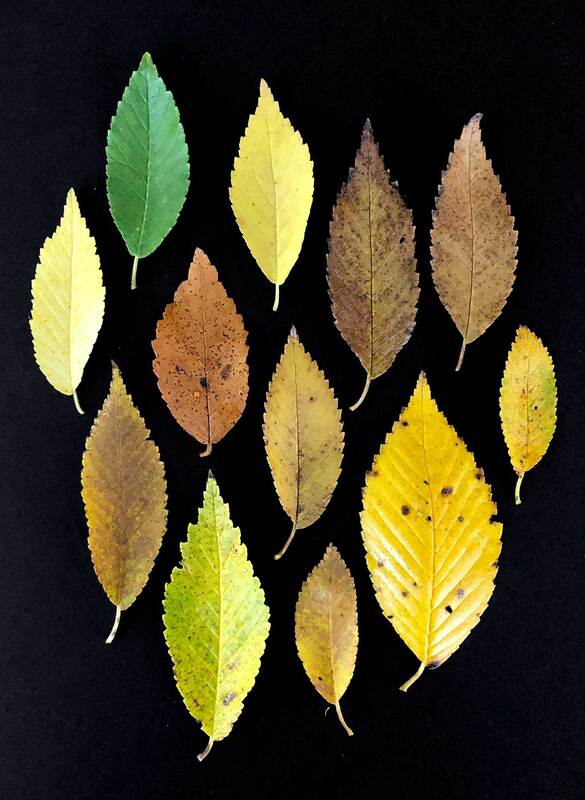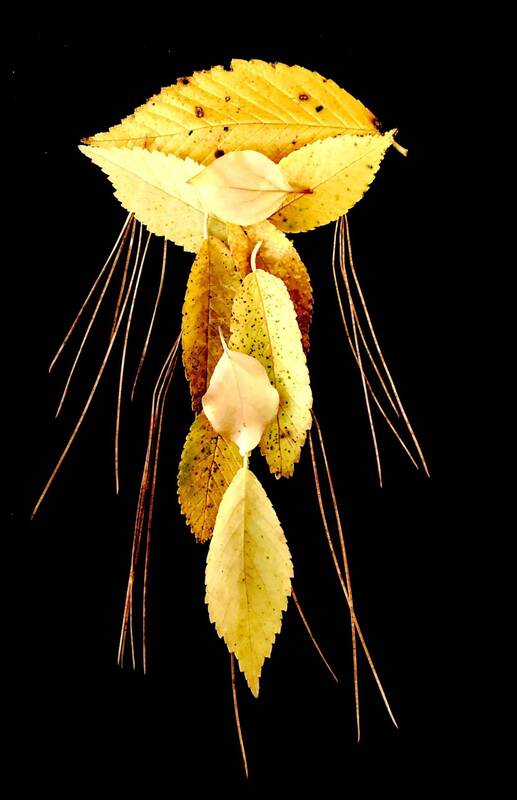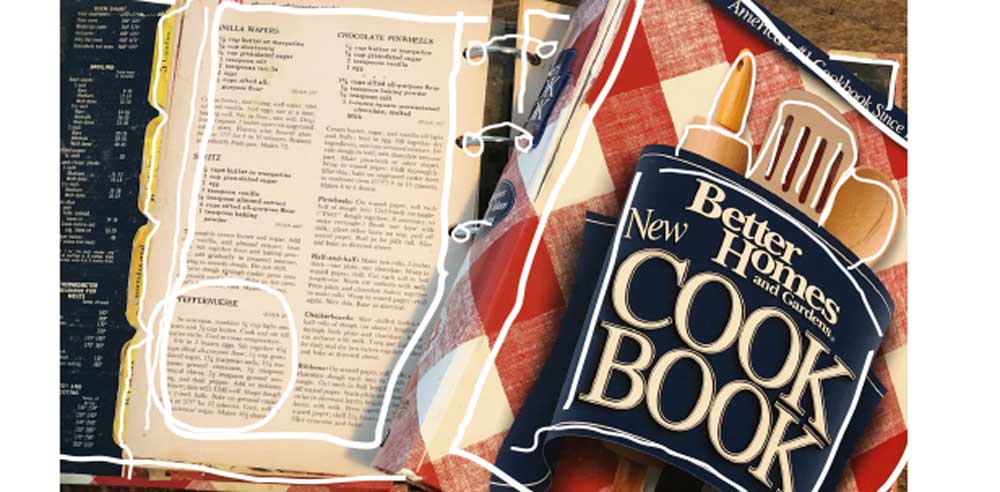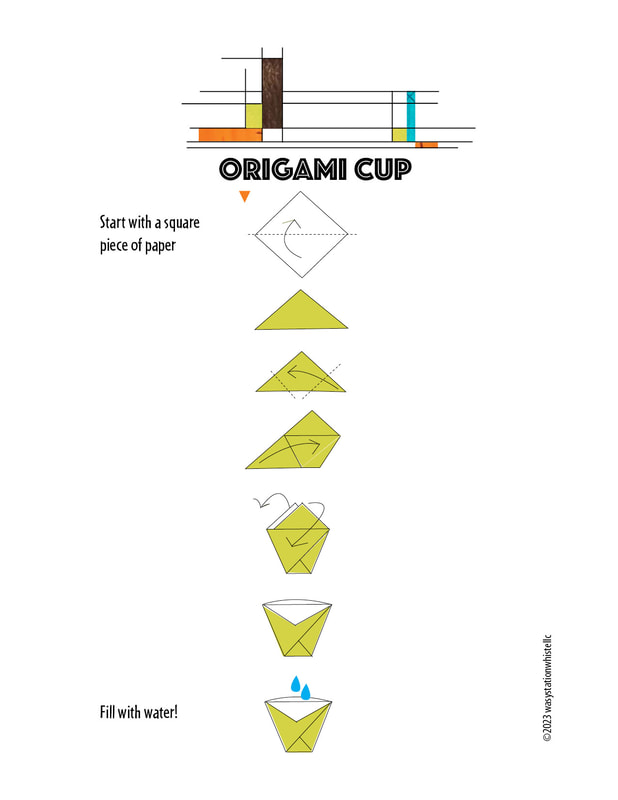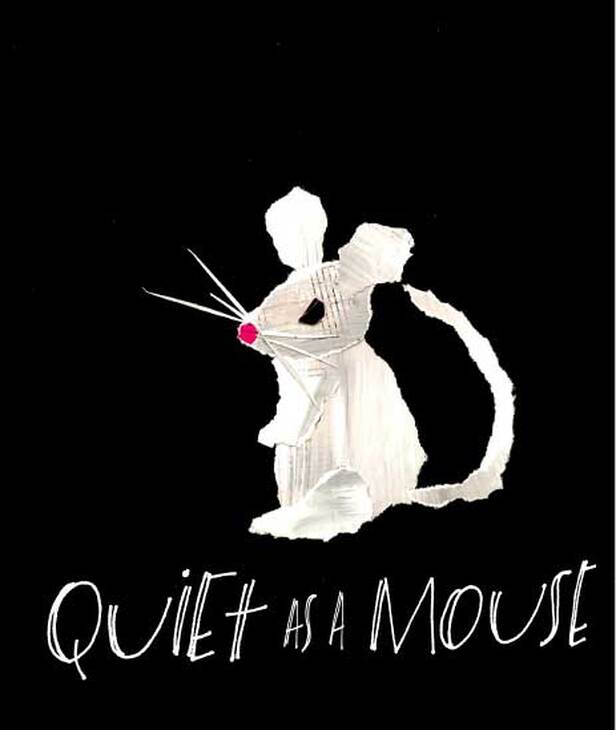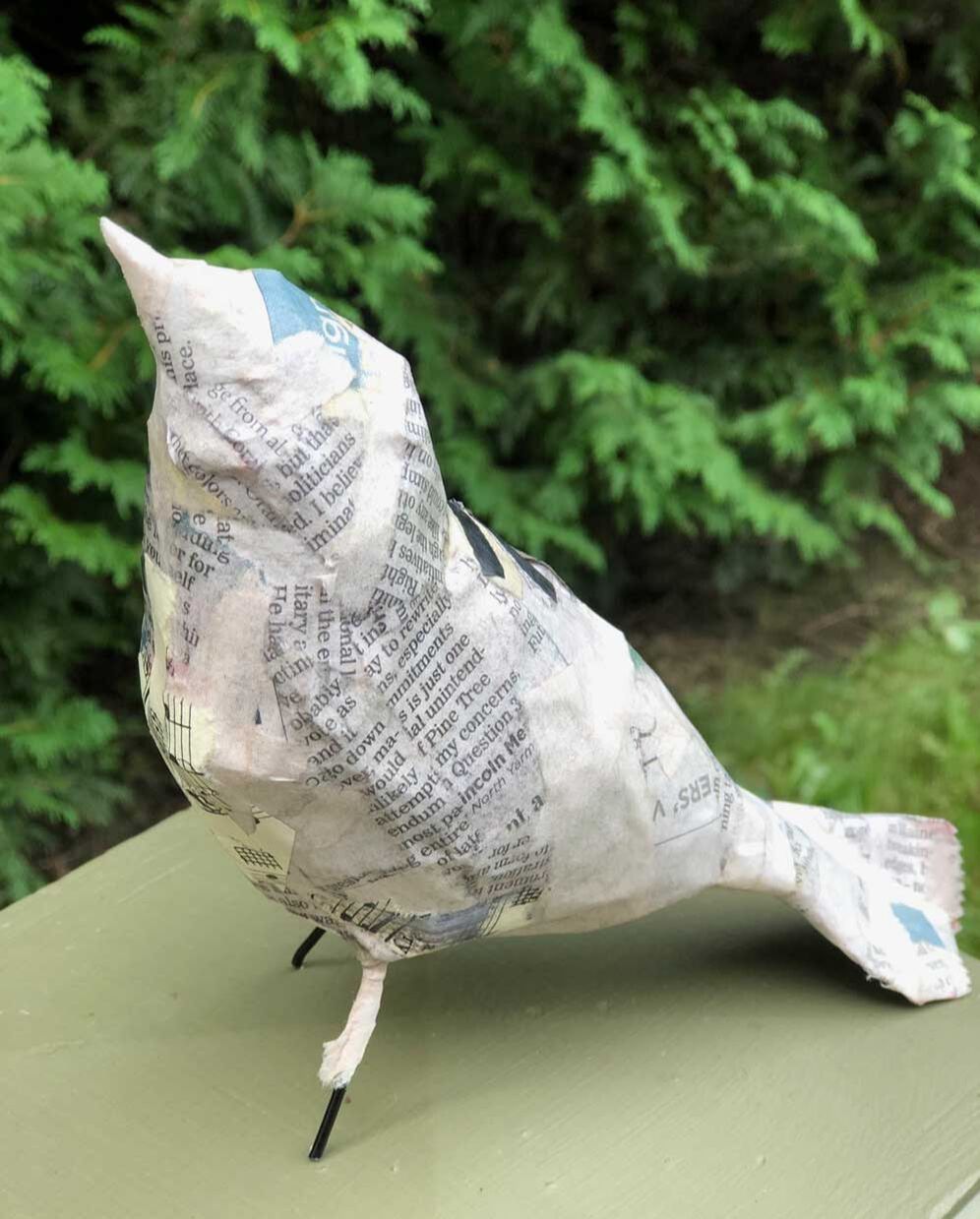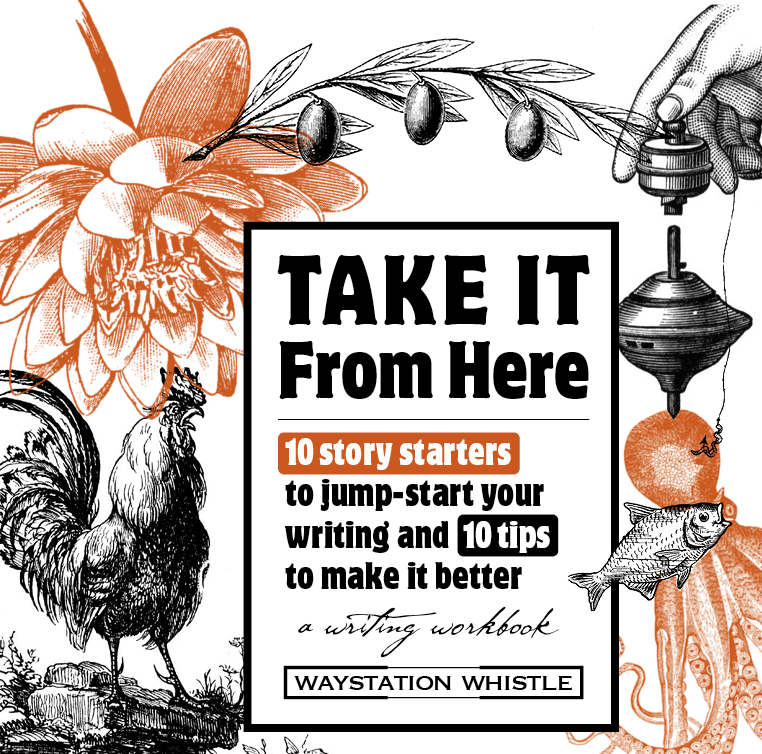|
When the sap is running There's a house down the street where every spring they tap the maple trees ... Three trees, one bucket for each There's another house where they used to tap the trees, but don't anymore I wish they did That was the house where they put out the metal buckets The house that still taps the trees uses plastic buckets ... sky blue If the light is right, you can see the sap level through the plastic and watch it rise, surge even, from one day to the next It's fascinating really, to see how much sap is released from the tree With the metal buckets, you can't see the sap level, but I prefer them anyway Camouflaged against the bark of the tree and the still-gray landscape, they cast a knowing silhouette ... A reminder that, although it's hard to see, change is upon us Cool nights will give way to warmer days, the sap will flow, and the flowers will, once again blossom Makes me wish I had a maple tree -------- Branching out ... The maple sugaring poem is a modified version of a piece I wrote a while ago. It came to mind when I was thinking of making a pop-up book and needed something to pop. It's the next step in my book-making journey. Studying how to create a structure ... one that will open and close properly has me snipping, folding, and gluing long past my bedtime.
This is a prototype. Rough, inefficient, and utterly captivating. I'll keep you posted on how it's going.
0 Comments
The title of this story might also be "Don't try to do it all in one project." After finishing my Solitaire book, I wanted to try another using a poem I'd written about cooking with a friend. The collage of the Jiffy box was created when I wrote the poem, so I figured I was halfway there. Not quite. Like the first book, there were unexpected hurdles and so many decisions to make. Though I do a lot of handmade collage work, most of my design work has been computer generated. As a graphic designer I've created posters, magazines ... and books ... on the computer. Books that are printed and bound in a print shop. Not by me, not by hand. Building a handmade book is new to me and it's been challenging. Another problem was making the project more complicated than it needed to be ... like trying to hand letter the text or create pen and ink drawings to illustrate the book. It was all too overwhelming. My lettering wasn't good enough (in my eye) and the illustrations looked, well, too primitive. Collage is where I'm comfortable, so for now and for this book, I decided to stick with what I know. One learning curve at a time. The next problem was thinking it all had to be perfect. I ripped out, tore apart, and recreated many, many pages to get things "just right." Well, it's impossible, especially when so much is so new. Now that the book is done, I know the cover material is too thin. It's warping. The endpapers on the inside of the front and back covers don't line up exactly as they should. And the stitching that holds the book together is not quite right. It should extend further up and further down along the spine. Some problems I recognized before the book was complete, but there had been so many delays and changes, I just had to let some be, and push forward. In the end, it's not perfect, but I'm pleased with the book, and here's why: When I decided to make the book, I hadn't read the story in a while. What a treat it's been to be taken back to that day in the kitchen. April is National Poetry Month. Both stories in my books came from short poems. Narrative poems. No rhyming, no formal structure. Are you interested in writing your stories? Try a narrative poem. Use a story you started in a letter, expand on a story you wrote in a journal, or one you mentioned in a diary. Explore a story that stays with you. It can be as short or long as it needs to be. Whether its making books by hand or writing stories, the most important thing is to start ... and keep stirring. April is Letter Writing MonthThis is how it starts. I gather my supplies: my favorite pen (a thin marker), stationery, and stamps. I'm seated at the desk ready to write and my mind goes blank. I don't know where to start the letter I want to write. It doesn't happen every time, but often enough. And I imagine it sometimes happens to you. I get the letter writing jitters and am afraid I don't have anything interesting to say. When that happens, I remind myself ... 1) This is not a test. It's easy to feel like it's some sort of exam, as if your writing will be graded on how well you write or how interesting your stories are ... never mind how neat and legible your the handwriting is. When this happens, remember, the people you write to will be the most forgiving audience you'll ever find for your writing. They are not concerned about run-on sentences, missing commas, apostrophes, or your handwriting, because ... 2) People love getting mail. They really do. Don't hold back because you're feeling self conscious ... mail makes people happy. It really does. 3) Tell a story. And start with a strong opening: The neighbor's chickens are squawking. That was the opening line I used when I first discovered the power of storytelling in my letters. It was so much easier (and interesting) to start with a story. Less about me, more about whatever it was I was writing about. And start with a statement like I did with the chickens. Write something about that delicious meal you cooked last night ... and describe it in detail. What ingredients did you use? Did you have to search for a rare spice? Was the recipe a new one? A family favorite? Start there. Are you growing a garden? Planting seeds? What does the dirt feel like in your hands? Do you wear gardening gloves? When do you expect your first crop? Give them the date and tell them what you'll be harvesting. Write about that concert you went to. How's that project you're working on is going? What's working, what's not? People love stories, and you've got some good ones. Need more help? Order your copy of A Snail Mail Guide to Cursive Writing Practice. It has all the encouragement and tips you'll need to get started:
p.s. Bonus tips ...
• Your writing will improve. Writing is like any other skill. You need to practice. The more you write, the easier it will get. And you may even get a letter or two in return! • Visit without traveling. Social media, texts, and phone calls are convenient, but there's something different about a letter. It gives people something to hold onto. The people you write to can be near or far. Either way, if you write, you'll make their day a good mail day. Write and let me know how it goes. We went to different schools in different towns, but when the discussion about school lunches landed on Sloppy Joe's, we compared notes and found ourselves reading the same textbook. Spiced ground beef in tomato sauce, straight-up ... no diced green pepper or chopped onion ... served on a hamburger bun with a side of cut corn and tater tots. We search for recipes and (even though Nat'l Sloppy Joe Day falls on Monday this week), decided to make it the Saturday night special. We considered updating the menu, adding the green pepper and onion found in so many recipes, or switching out the white bread hamburger bun for whole wheat ... nah. And the corn? Maybe a green vegetable would be a better choice. Probably. But no, it had to be corn. And finally, the tater tots. Would you like a side of tater tots with that? Yes, please. It may not rank as the healthiest, most well-rounded meal, but it hit every note on the school lunch scale of nostalgia. The only thing missing was that chocolate frosted peanut butter bar I remember. And of course, because one thing always leads to another ... and, what's school without homework, there's a new assignment: Find a recipe for those chocolate frosted peanut butter bars. Do you have a favorite memory of school lunch? Was it cafeteria style, packed in a lunch box, or a brown paper bag? Is there a lunch you'd want to recreate? Make it. 3 Reasons to Write a Letter
1. It’s Good Writing Practice The elements of a good story can easily be applied to letter writing . . . paying attention to the opening line, the order of your paragraphs, the flow from one to another, and your conclusion, can help hold a letter together and make it a more interesting read. If you write about your garden, write about your prickly cucumbers and the tomato vines, laden with clusters of pale orange cherry tomatoes. Not sure what to write about? Write about your day, what you saw on your walk around the neighborhood, or what you made for dinner last night. 2. People love getting mail It’s why we check our mailboxes . . . the chance there might be something there. No matter how often there’s nothing, there’s the chance that today may be the day. Write to someone you know and turn mailbox disappointment into delight! 3. Finish (or start) a conversation It happens all the time, you start an interesting conversation with a friend or relative, only to be interrupted. Drop a short note in the mail saying how good it was to talk. You never know, someone might surprise you and write back. It does happen! Dinner may be late tonight We'll blame it on the clock ... on daylight saving time and the bewilderment it creates in the long shadows of the afternoon sun in the decorative patterns that inch across the wall and lull us into thinking it's earlier than it is when the clocks spring forward More doodling ... This is a drawing I created ... and the inspiration for the 3-D wire replica above. It's all a bit wonky, but it cast the right light and gave me the idea for today's poem.
We often think that writing memoir or our stories requires big events or a lifetime of adventure. That's a lot of pressure. Why not start with small moments that make you pause? Every year daylight saving time messes with my timing. For a week or so, it's either later or earlier than I think. It's easy to imagine we are ruled by the clock and the ping of our phones, but on occasions like this, it's nice to know nature's light still rules the day. Go ahead, write about something small, you've got time. How a simple idea grew in something (almost) too much to handle .. and why I didn't give up When I started my Solitaire project, the idea was to create a simple book from a poem I wrote. What I ended up with was far more complicated ... When I decided to use the poem to create a small book, it was an exercise in bookmaking. A one-off experiment. Once I decided to make the book, I thought it might be nice to make a box to hold it. And then ... if there's a box, why not include a deck of cards. This is about a card game after all. And then ... what if someone opens the box, reads the story and wants to play a game of Solitaire but doesn't know how? I must include instructions. But I can't just copy the instructions, that would be plagiarism. I'd have to write them in my own words. And then ... written instructions are good, but a diagram would be helpful. It seemed with each problem solved, I created more work for myself. What have I gotten myself into? It was a lot. But there was still one unanswered question. What about illustrations? There are minimal pages in the book ... illustrations would add bulk and make it more visually interesting. But this time, my go-to art of collage didn't seem like the best option. Some recent explorations in doodling provided the answer. Simple black and white drawings of the playing card symbols: ace, club, diamond, heart. Why I didn't give up ... It's simple, really. I've got too many unfinished projects on hand already. I wanted to finish this one. How I did it ... When I became frustrated with one bit, I turned to another. Building the clamshell box was the most difficult element. When I got frustrated with the box, I moved to work on the book. When the book hit a standstill. I switched to writing and illustrating the instructions. Serendipity in the form of a deadline ... Each week I create the Story Starters calendar and looking ahead in February, I spotted Play More Cards Day ... on the 26th. It was weeks out and I decided it offered the incentive and deadline needed to get the job done. I almost gave up ... There was so much about this project that was new to me, that fought me, that made me doubt myself, made me ask, Why bother? So why did I finish it? Well, I shared it with you early on and wanted to be able to say I did it. Finished the job. And, it was important to me. Like I mentioned earlier, I have lots of half-finished and half-baked ideas sitting idle. Some I want to finish, others I know I'll never go back to. This one holds special meaning. It wasn't easy, but it's done ... and yes, it was close ... I finished it late in the afternoon on the 26th. Will I make another? Hmmm, not so sure. Is it perfect? Far from it. But wow, doesn't it feels good open the box and see what's inside! Is there a project you've started but haven't finished? Is it time to give it up ... or finish it? A do-si-do and nowhere to go We came face to face in a standstill at the end of the aisle across from where the whipped cream in a can sits on the top shelf of the refrigerated section against the wall he shifted to his left I shifted to my right and we were back where we started head to head cart to cart A do-si-do with nowhere to go So he called it ... with a nod of the head he dipped to his right and I did too pushing forward we passed one another shoulder to shoulder a side-stepping sashay that ended with a two-step twist when he said ... thanks for the dance. A month of distractions
In January, when shorter days lead to restless evenings When watching and reading turn to too much ... too much watching too much reading When my mind and hands are hungry for activity even though I'm feeling lazy I need something to do, but just a snack, thank you A little something that's not too much of a commitment, but interesting enough to engage I grab a pen and a notebook and sketch something And it's no good It never is and I wonder why I keep trying Something's off ... always And I never have the patience or interest to do any better So I cover it with what does feel good and better ... collage Leaf after leaf branch after branch it comes together I get lost in the colors, the process, and when I'm done, I rinse my sticky fingers and step away from the table Butterflies in your stomach? Though The Great British Baking Off and its spinoff, Junior Bake Off, have been broadcast for sometime, only recently have I settled in to watch more than just an episode here and there. I'm hooked. Part of the appeal is how cheerful it is. Some of it comes from the setting ... an open-air tent on a green lawn, the bright colors on the mixers, and generous dash of humor offered by the comedians who banter with the bakers. But there's more to it. There's the grit and determination of the bakers themselves. Especially the junior bakers. When the dough doesn't rise, the caramel burns, or the cake topples, they hang in there. And start over. Again and again. What looks like a looming disaster is somehow salvaged and sometimes, turned into a show-stopping winner. Tomorrow the calendar recognizes Idiom Week and when I searched for idioms, "butterflies in your stomach" caught my eye. The bakers start each competition with butterflies in their stomachs. They're nervous and excited ... each and every time. And they keep going. It's a good reminder to viewers like you and me to hang in there. To keep going ... even when we're not sure how. To try new things. I'm still struggling with the making of my solitaire book and box, but I'm not going to stop ... though I've been tempted. One of the biggest challenges was to find a way to make a box that would hold both the book and a deck of cards ... and I finally figured it out. A well for the cards to sit in, with the book sitting on top of the well. That had me stumped for a while, too ... until I realized I could measure and make a dummy version to test it.
There have been a lot of heavy sighs and there's still a lot of figuring to be done, but I'm determined. Are you working on a project that's got you frustrated or stumped? A sentence, paragraph, or chapter that won't come together? A dropped stitch in a knitting project? A painting, skiing, or woodworking technique you just can't grasp? Keep trying ... and like the bakers, you'll get there. The jigsaw puzzle has been on the table for five days. Most of the pieces are in place. What's left will be the most difficult ... lots of similar looking patterns and colors. The first day was relatively easy. After finding and fitting all the pieces that made the outside border, I pushed away from table feeling good. The next day, I spent about an hour fitting the pieces together and then my success rate started to dip; I couldn't fit anymore pieces together. Time to stop. When I went back to it the next day, I sat down, looked at one piece and knew just where to put it. The day before I couldn't find a match and then, the following day, with fresh eyes, new matches appeared. Effortlessly. I also found answers to questions I was struggling with on my book project. The Quiet Shuffle of Cards started with the idea of a small accordion book to hold a poem I wrote. I created an early sample, a simple book, and was pleased with it. But then, I did some research and saw other books. Beautiful books housed in beautiful boxes with trinkets and inserts, and my project went from a simple accordion style book with printed pages to a book with hand-lettered pages, illustrations, and a box ... to include a deck of cards and instructions for playing Solitaire ... way more complicated. And, I got stuck. I've never made a handmade book, let alone a box. The hand lettering was looking good, but still, it needed work.
The book holding the poem is larger than a deck of cards. How do I balance that? I couldn't figure it out. So I stepped away and focused on the jigsaw puzzle. When I sat down again to focus on the book, solutions surfaced and the project moved forward. It was a good reminder. By stepping away and concentrating on other things, we can find answers to pesky problems. Take a break, and the pieces may just fall into place. January is Hobby Month. What are you working on and how's it going? Is it time to take a break? The Festival of Winter Walks encourages us all to get outside when it's cold and the days are short. Last year on a walk through the woods, I took a series of photos, converted them to black and white, and love how they look. Are you ready? Let's go for a walk ... I was glad to see this tree hadn't let go of its leaves, it seemed to welcome us into the woods. The stream below the bridge is frozen and the boards creak underfoot as we cross. Note the white trail blaze. Do you see it? Snow blankets the ground like frosting ... all the way to the edge of the stream. When we stand still long enough to calm our breathing, we can hear the water trickle over the rocks. Heart shaped pockets of snow and deep wells around tree trunks. Today is a good day for a walk. Tomorrow, too.
To make the most of your winter walk, be sure to bundle up. Wear layers you can unzip or unbutton as your body warms (and it will). Grab a hat, gloves, and proper shoes or boots. I also like to tuck a few hard candies and butterscotch drops in my pocket ... one for me and a few to share. Vary your walks from in-town sidewalks to parks, and wooded trails. To keep things interesting, create challenges for yourself: - take note (and photos) of seasonal changes - say hello to everyone you pass - count how of many and what type of dogs, cats, squirrels, or birds you see - take along a snack for an impromptu picnic - exhale and watch your breath to see which way the wind is blowing - be sure to look around ... and up When I moved the typewriter poster that was rolled and stored in a bin in the attic for the umpteenth time, I decided it was time to do something with it before it gets torn, crumpled, or ruined. It's never going into a frame to be hung on the wall, but it's too charming to toss, and it seemed there had to be some use for it. There is. Found paper stationery: papers from tin cans, fancy soaps, that paper wrapping around the just-bought bottle of Lea & Perrin's worcestershire sauce, flour bags, hanging number tickets from the auto repair shop, bagel bags ... and repurposed posters. Found paper stationery is worth the effort for two reasons:
The question now ... do I write or type my letter? ... feeling a bit bookish Do you remember the post, The Quiet Shuffle of Cards? It was about a game of Solitaire played in the wee hours of the morning when sleep was elusive and I was restless. It's just one of many short stories I've written (mostly for this newsletter). For some time I've wanted to do more with the stories. But what? I think I found the answer: handmade books. This is the first ... and I've made so many mistakes. Though I'm pleased with the outcome of the red cover, the paper inside may not be the best choice, the gold and polka-dot tapes are not sticking (I have to pull them up and add glue), and the book needs some sort of clasp (something I should have thought about earlier in the process). It's an accordion or concertina (a new-to-me term) style book with 10 pockets: seven to replicate the layout of a Solitaire deck and three more for the inside title page, the story, and an insert on how to play Solitaire (is that necessary? a good idea? not sure). The book is still just shell, with lots questions that need answers. Do I use real playing cards, or create my own just for the book? And the story needs work. After I printed and read it on paper rather than just on the computer screen, I see things that need to change. Below you can see some edits in progress. Writing is so much about rewriting.
Getting started and having the bulk of the writing done is the hard part (for me). Editing my words is where the pleasure of writing begins. Replacing one word with a better, more concise word; adding or eliminating a comma; or splitting a long sentence into two can make such a difference. Once I realized I had to glue the tape that wouldn't stick, it was disappointing, but I knew I had to keep at it, mistakes and all. I was too far along. Starting over won't help much, and I know I'll learn more if I keep going. Despite the rather steep, but (hopefully) not insurmountable, learning curve ahead, I'm feeling a bit bookish. A bit like this is Chapter One and I want to keep reading to see what happens next. Fingers crossed it all sticks together. How one thing leads to another ... I've been struggling with a project, so I've done some research and reading, and more research and more reading. And I'm starting to feel as though I'm going around in circles. Because I am. I'm not sure who said, "The answers are in the work," but I know it's true. I also know the hard part is starting the work. Though I'm still uncertain, I've decided it's time to start. Anywhere. To grab at that idea that hangs like a loose thread and see where it takes me. When I set out to write today's email, I toyed with the idea of World Jellyfish Day listed for Friday, but aside from seeing one or two floating in the water while swimming in the ocean (eek!), what do I know about jellyfish? So I decided on a nature theme to recognize Saturday's Nat'l Play Outside Day. I gathered leaves, pinecones, pine needles, and dried flowers to make a natural mandala, didn't like what I created, and scrapped that idea. But the leaves I collected did merit a second look, so I created the leaf pattern above. They are all from the same tree, but all so different. Much like all of us. While the pattern of leaves on the black background was striking, I wanted more. And that is when then the pieces (the black paper, the yellow leaves and pine needles) came together to form an idea ... and a jellyfish. A bit abstract, but still, a jellyfish. Be the jellyfish ...
When jellyfish were still an idea, I read a bit about them and was reminded of their bioluminescence ... they light themselves up in the deepest, darkest water. As I discovered with my foraged materials, once we start, one thing leads to another, and then, like the jellyfish, we create our own light. Our own bioluminescence. It can be difficult to get started, but once you do, your light will shine. -------- p.s. After collecting and working with the pinecones and pine needles, my hands were covered in sap. Even if you're not a fan of Wednesday's Nat'l Peanut Butter Lovers Month, you may be interested in knowing it's a handy cleaning agent. Washing up with soap and water doesn't cut through pine sap. But ... peanut butter (or almond butter) does. ------ This post was originally published in the Waystation Whistle Sunday email series. Sign up and get a new story, every Sunday. Mix well and add a bit of magic I have two copies of the Better Homes and Garden Cookbook ... the one with the red and white checkered cover. One was published in 1968 and the other, 2002. My first copy is a hand-me-down. When I received the updated version as a gift, I was all set to toss the older version. Why keep it? But then there was a twinge; something about tossing the old version didn't seem right. Was there regret in letting go of a book that helped me learn to cook, served me so well? Yes, that was part of it. But I wondered, too, if some of the recipes might have been changed ... or even eliminated. And there were. What happened to the Pfeffernuesse? That 1968 version was my go-to book for Pfeffernuesse, a spice cookie I like, especially around the holidays. When I grabbed the updated version and scanned the index, the recipe was ... gone. Nowhere to be found. Cut from the new edition and replaced with updated recipes and the latest food fads. It was then I knew. I couldn't, wouldn't toss the old book. I'd have to keep both. I've got other cookbooks, and each serves its own purpose. In some there may be just one recipe I like. Others may hold two or three favorites and some I use for only for reference. Of course it's easy to search online for recipes, and I do, but there's something about slipping a cookbook off the shelf and thumbing through the food-stained, dog-earred pages to land on that recipe I know will be there. Ready, as the editor in both books wrote, to "bring joy and good eating." Here's to new and old favorites. October is Cookbook Month. Do you have a favorite? FInally, in this month of tricks and treats, little bit of magic ... Tuesday highlights World Origami Days and Friday showcases Int'l Magic Week.
Here's a magic trick you can practice and try ... Ask someone if they believe you can take a flat piece of paper and make a cup that will hold water. They'll doubt it can be done. Ready your square piece of paper, and with all the hand-waving, paper-folding flair you can muster, show them how it's done using the printable instructions below ... and fill your cup with wonder. It's hard to know how long it took
It wasn't until the warm spring air arrived and it was time to exchange our bulky coats, gloves, and hats for lighter jackets and longer days that I had any inkling something had been happening. On my first trip into the attic, my eye caught the bright orange draft snake on the floor just inside the door. Something was different, but I wasn't sure what. Was that a dust bunny on the left end of the draft snake? I wasn't surprised at the sight of it, it had been a long winter and trips to the attic were few. On my second trip, I saw another, right in the center of the long tube. Once again, with arms laden with winter wool, I stepped over it. But something wasn't right. When I came down from the attic the second time, I bent over to take a closer look. It wasn't one dust bunny, or two ... there were holes in the fabric. The finely shredded threads feathering the edge of the holes had tricked me. The tube, still holding its shape, was empty ... of the hundreds (or more likely thousands) of split peas I'd poured into the tube to stop the draft. One, two, or more(?) mice had chewed through one end of the draft snake to get at the peas. Once they reached the middle, they chewed another hole. Less time in the tube, more time for removing the peas. But where to? How long did it take? Did they eat them? Share them? Hoard them? It remains a mystery. There were no split peas to be seen or found. Not one. Anywhere. And no mice. We never saw them, found mouse droppings, or heard them ... quiet as a mouse. Until we set a trap. Text from infographic:
Out with the old? In a world where credit cards, online ordering, fast fashion, and overnight delivery make it easy to replace the old, torn, and tattered, is there any place for mending or darning? Ask the person whose favorite sweater has a hole in the elbow how she feels about parting with it. Or the one whose sleeping socks sprung a hole in the heel. No others will do when the cold air seeps in under the blankets and grabs at his toes. It can be hard to let go. Maybe you don’t have to. With a few simple tools and stitches, you can mend and darn the treasured clothing you’re not ready to part with. In mending a pair of sleeping socks, the darning mushroom is slipped into the sock, the fabric/hole is stretched over the mushroom cap, and a series of running stitches build a cross-hatch weave, filling the hole. So what’s the difference between mending and darning? Mending is repair: replacing a zipper, restitching a dropped hem, sewing a button back in place, or adding a patch to a cover a hole. Darning weaves thread into the existing fabric to rebuild a hole. There is visible mending where the repair can be seen (like the sock), and invisible mending, where the repair is not seen. Spend some time mending and you may find you’ve stitched together something larger than a tear or hole in a piece of fabric. ©2023 WaystationWhistle • Text and photos by Christine Richards • Stitching sampler from Handicraft for Girls, McGlaufin, Library of Congress Watch for signs. That's what mystics and people who believe there's another layer of knowing say when they talk to others about finding a way forward. Be still and watch for signs they say.
Hurricane Lee passed through yesterday and in the days leading up to its arrival, we noticed a lot of bird activity. Dozens of small birds swarmed the side yard—a herd of wrens? And fishing boats all along the East Coast reported small birds—hundreds of them—flitting about their boats. Like nothing they'd ever seen, they said. Maybe was the storm pushing them northward, maybe they're migrating. For the past few weeks I've been looking for something to make. A hands-on project. Something that doesn't require a lot of new tools and isn't too difficult to learn or master. Something I can pick up when I need a distraction and easily set aside when I'm busy. And above all, something that won't add inches to my waistline. I'd been considering paper mache and got excited about cardboard sculpture, but couldn't (wouldn't) commit. Until this week, when I decided to go with paper mache. For two reasons. 1. We've been walking early in the morning and have stopped to talk with the man delivering newspapers. We've seen him delivering papers ... for years. Even had the paper delivered for a while. Last week when we stopped to talk, he gave us a copy of the Sunday paper. The following Tuesday he dropped a newspaper on our porch. I'm sure it's a soft-sell sales push to encourage us to sign up for delivery, but nonetheless, I was thinking about paper mache and had no newsprint (a crucial ingredient). Now I do. 2. And, then, once I had the newsprint, the birds appeared. They're everywhere. Are these signs? Who knows, but when I decided to jump in with a small project, I decided to make a bird. Entirely freestyle. I'm not even sure what kind of bird it is, but I'm leaning toward a crow. It's taken days to get this far: build the shape, add strips of newsprint soaked in paste, let it dry overnight. Add another layer. Wait. Repeat. It's a slow process, but it's rewarding to see the bird come together. Once he's got his feet on the ground, I may commit to more ... unless, of course, there's a sign pointing me in a different direction. What do you think? A coincidence or a sign? I'm not sure, but it's definitely more compelling to think of it as a sign. If you're interested in paper mache, this is a good starting point. I'm using the glue/water mix. Seems easier and less fussy that the flour mixture ... and it doesn't spoil. To see the paper mache process, paper artist Diana Parkhouse posts videos and offers advice. Her small-scale animals are a delight. |
Whistlestop Blog
Enjoy a story and find inspiration to write one of your own. Categories
All
|
